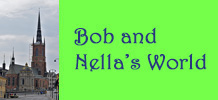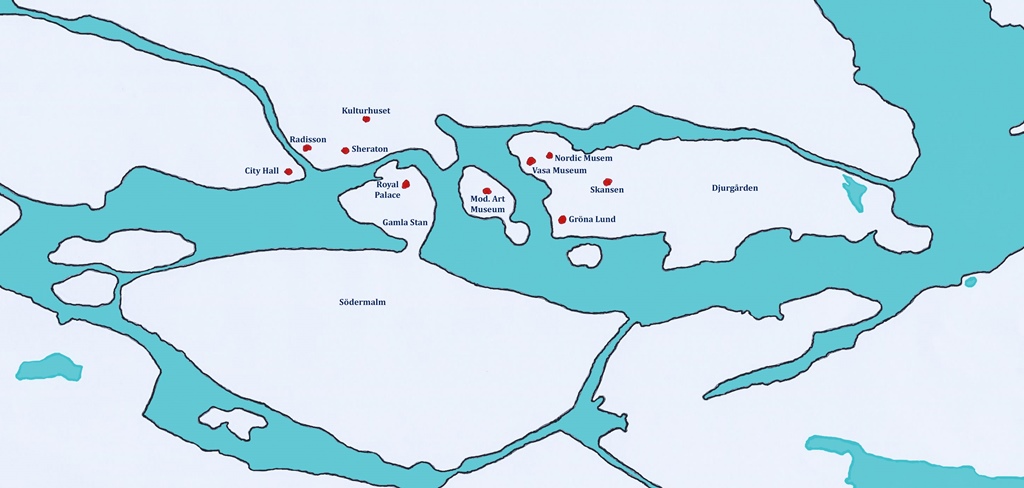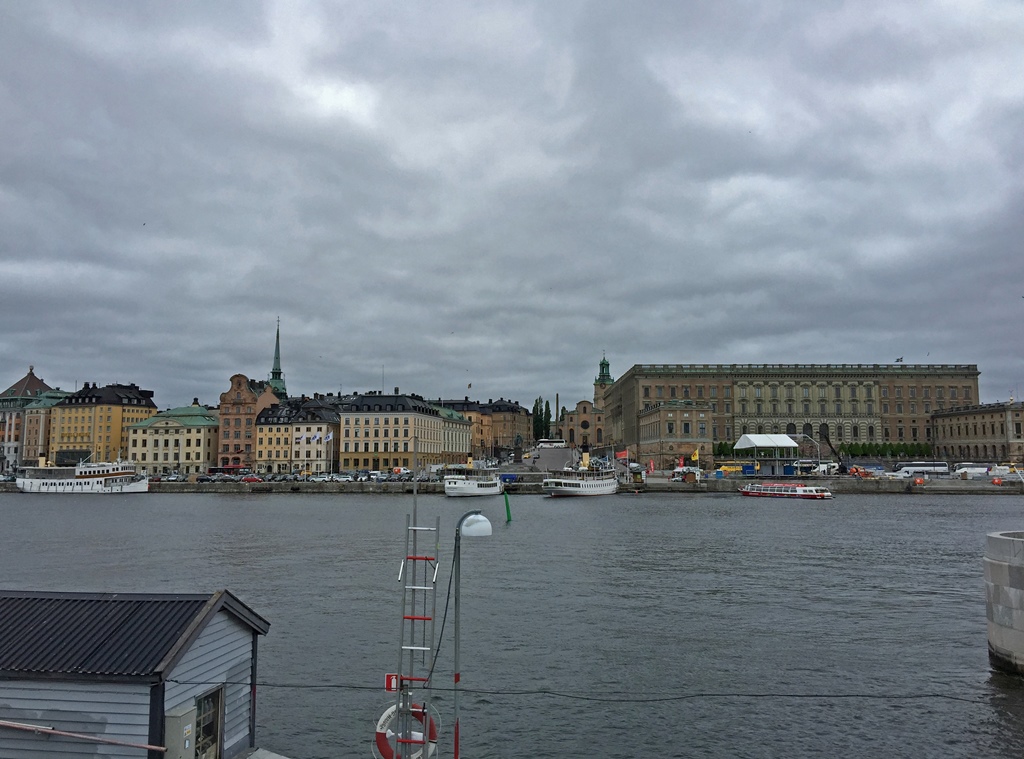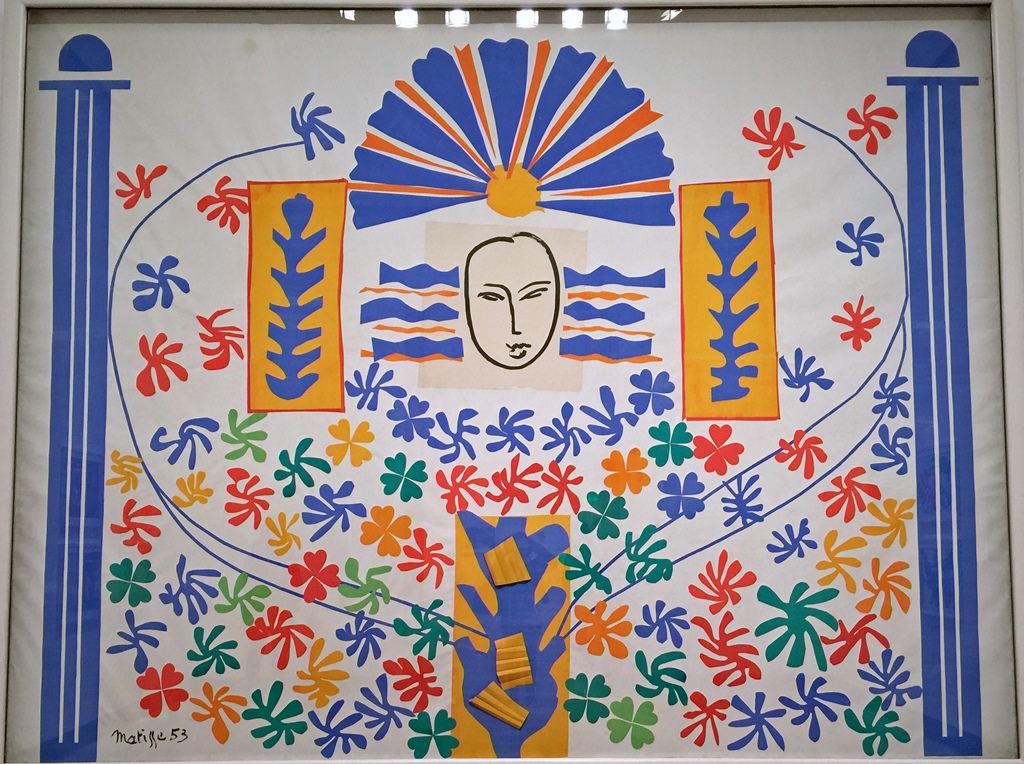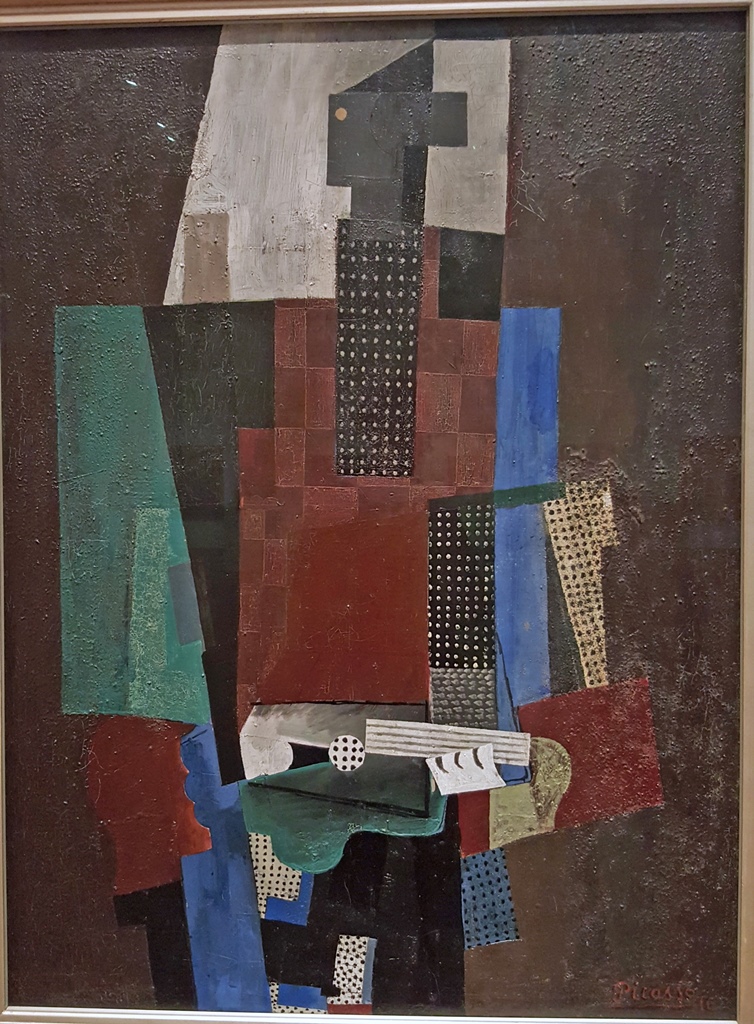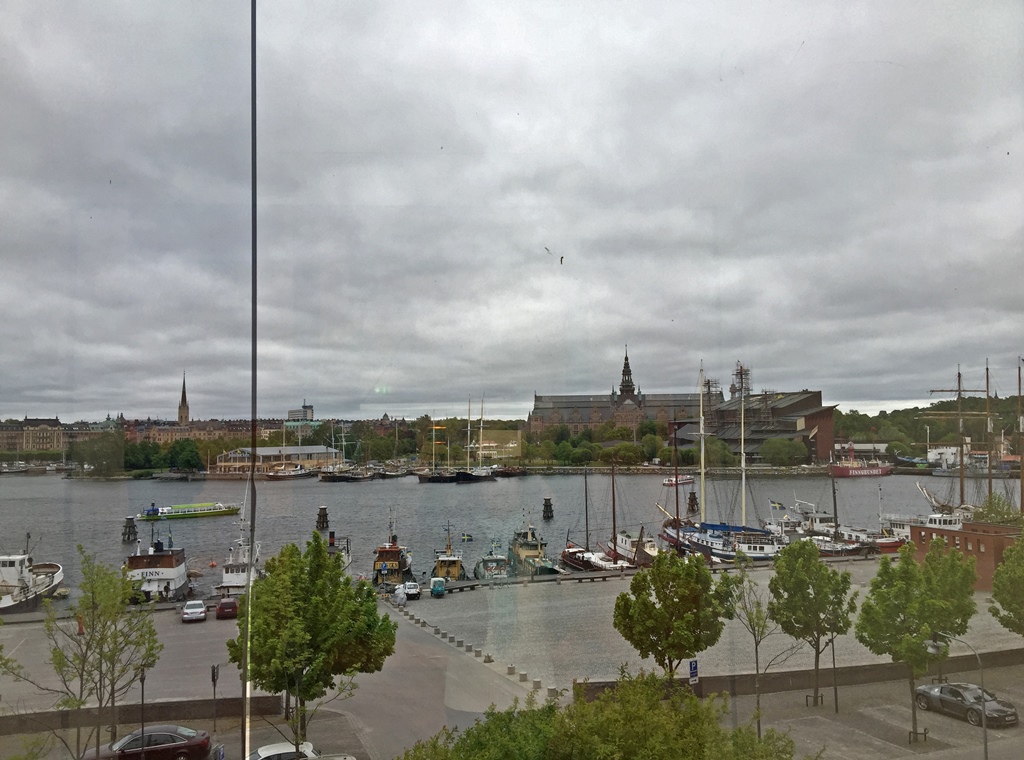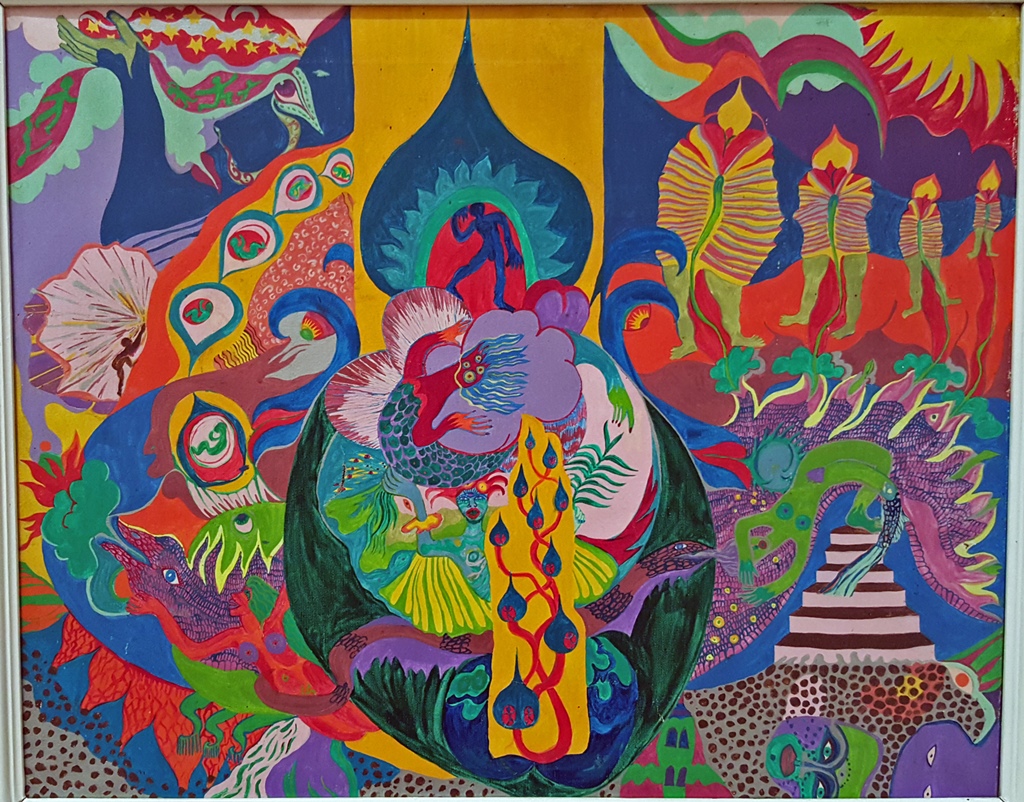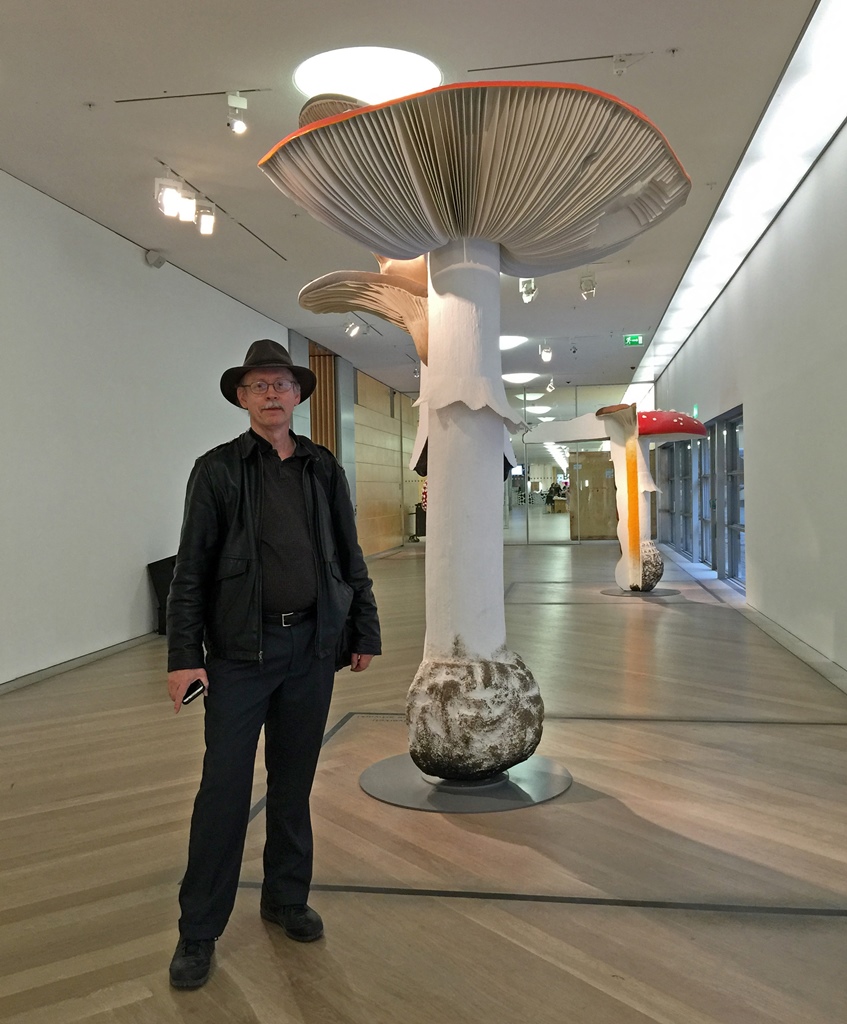Central Stockholm
Our last sightseeing destination in Stockholm was the city’s
Museum of Modern Art (Moderna
Museet). The museum is located on the island of Skeppsholmen, in the harbor between Gamla
Stan (the Old Town) and Djurgården (island home to the Vasa Museum, among other attractions).
We found a bus that took us most of the way to the museum, but a certain amount of walking
proved necessary. And while we’d been blessed with pleasant weather in Stockholm up to this
point, our luck deserted us for this last destination. There was still a month to go before
the start of summer, so changeable weather was probably to be expected, and on this afternoon
we were greeted by a temperature in the 40’s (Fahrenheit) with clouds, wind, and a little bit
of rain. We crossed the bridge to Skeppsholmen hastily, noting that the view was probably
lovely, and made our way to the museum without too much trouble.
Gamla Stan from Skeppsholmen
The Museum of Modern Art was founded in 1958, and began with a collection of art from the
early 20th Century and photography dating back to the early days of the art form. Since
then, the collection has expanded, and a new building was completed (in 1998) to house it
all. In 1993, there was a famous art theft from the museum, from what must have been the
old building, in which six Picasso works and two by Georges Braque were taken (all of the
Picassos and one of the Braques have since been recovered). On the main entrance side,
the new building has "MODERNA MUSEET" scrawled across it, and appears to consist of a
single floor, and this is essentially the case, if you’re only interested in viewing the
permanent collection. But there is some space downstairs for temporary exhibitions, plus
an auditorium and research areas. We stuck to the permanent collection.
The artists represented at the museum are largely a list of the usual suspects – artists
whose work we’d seen at a number of other museums with displays of 20th Century art. But
some of the artists were unfamiliar to us, and of course there was more Scandinavian
representation than we'd seen in some of the other museums. I could go into detail on
each artwork, but this would get wordy, and mostly I’d be making stuff up, so instead I’ll
just present the following photos semi-chronologically, starting with the first two
decades of the 20th Century:
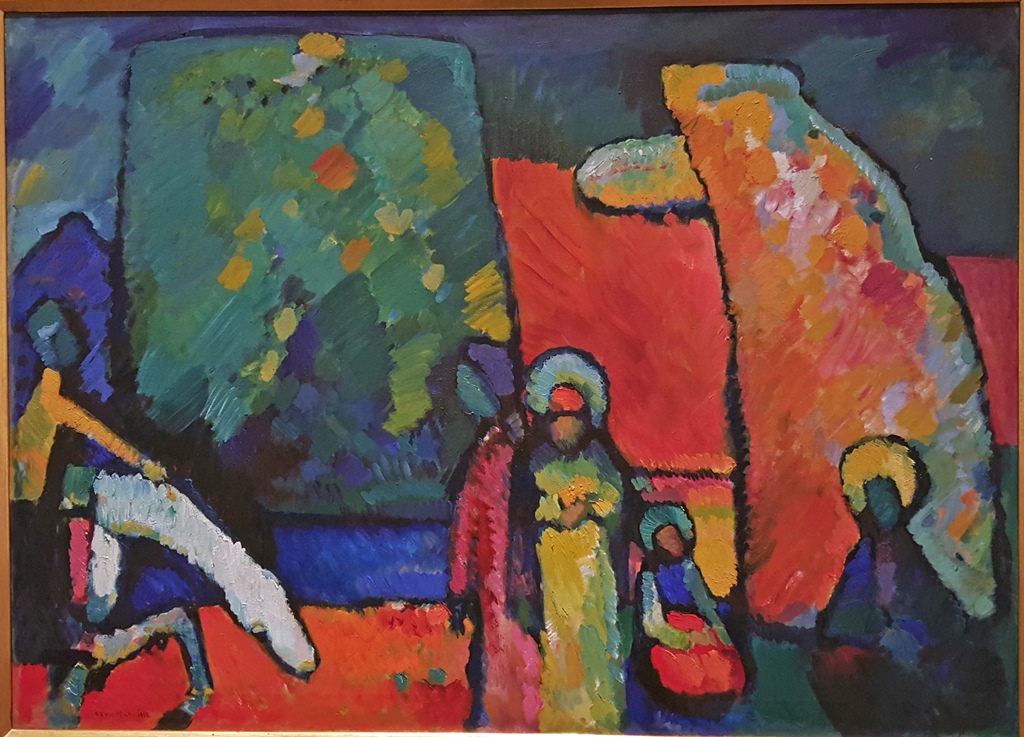
Improvisation No. 2, Funeral March, Wassily Kandinsky (1908)
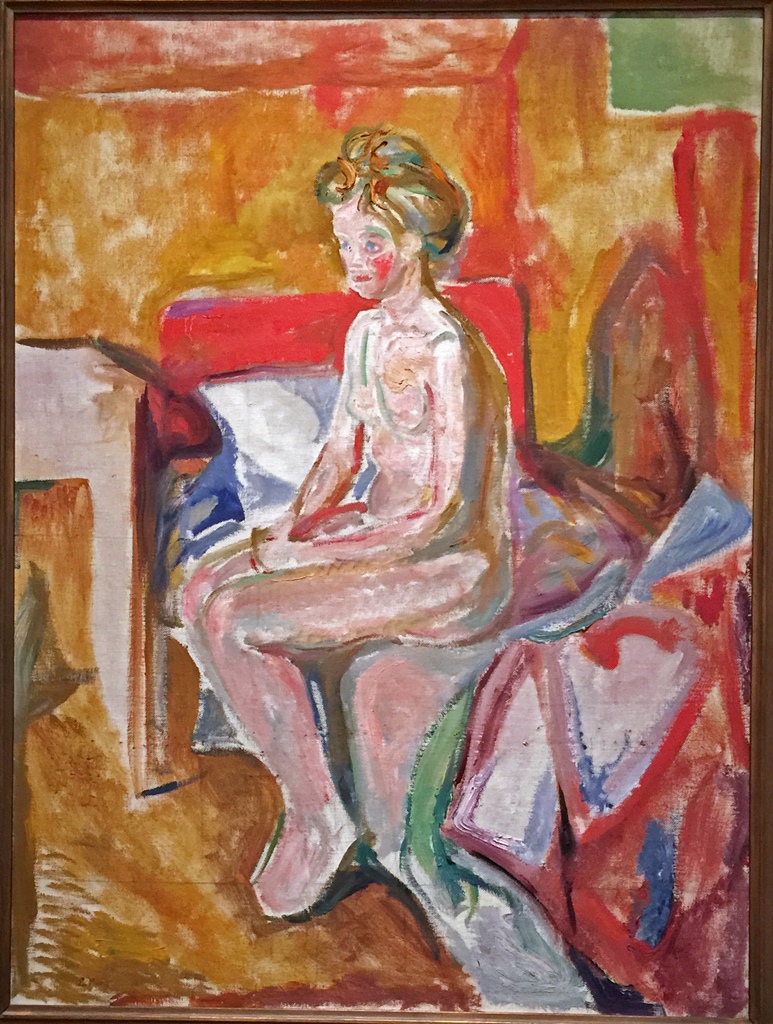
Girl at the Bedside, Edvard Munch (1916)
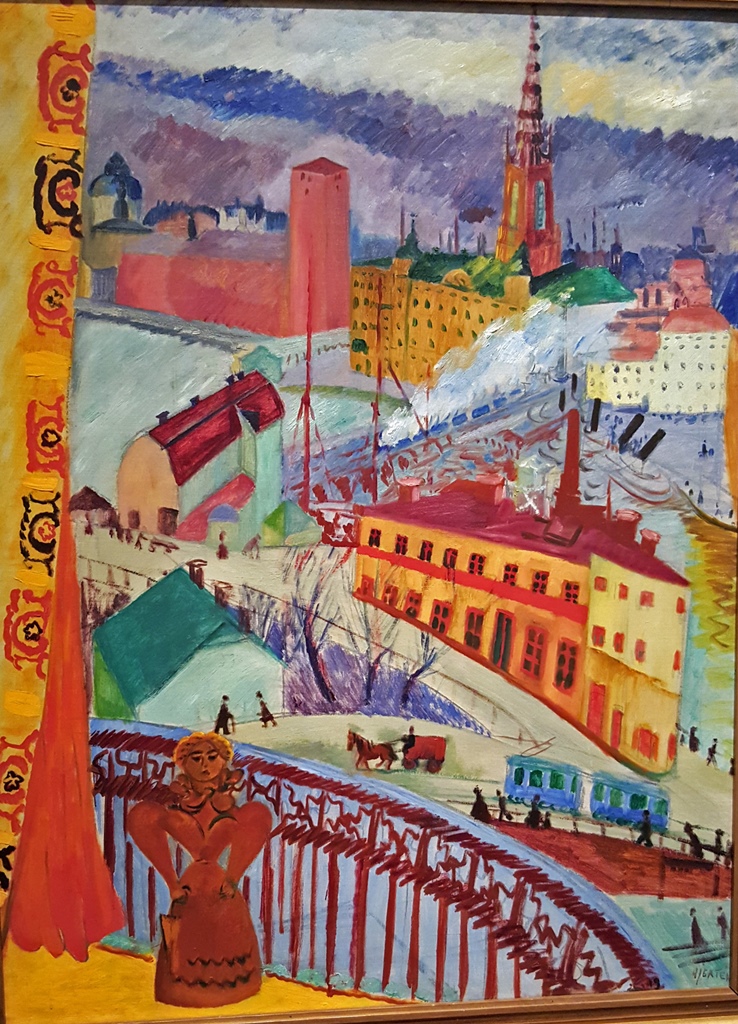
View of Slussen, Sigrid Hjertén (1919)
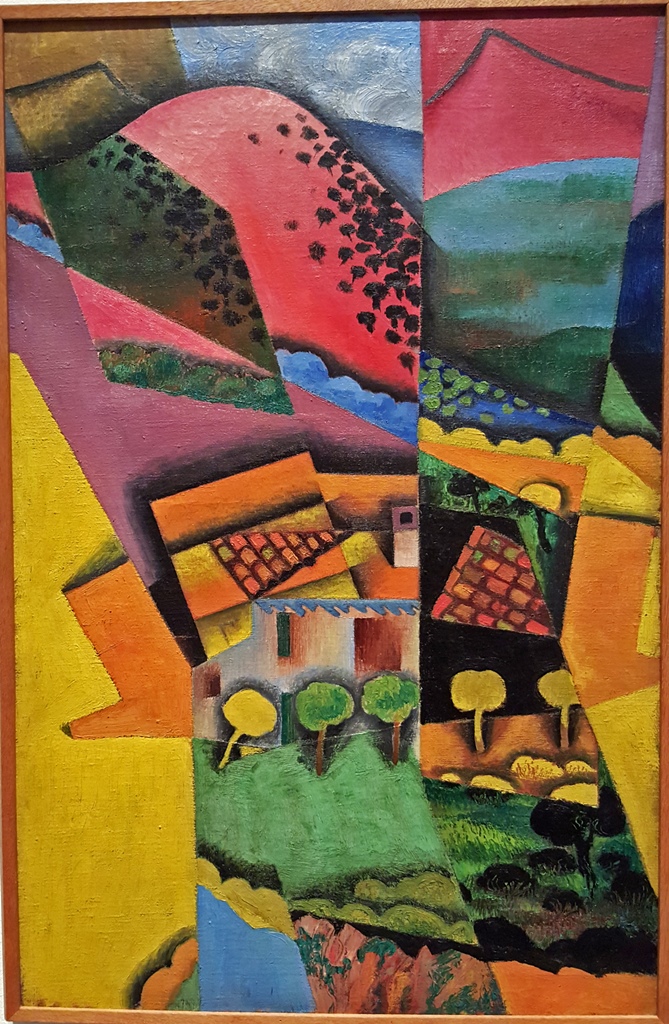
Landscape from Céret, Juan Gris (1913)
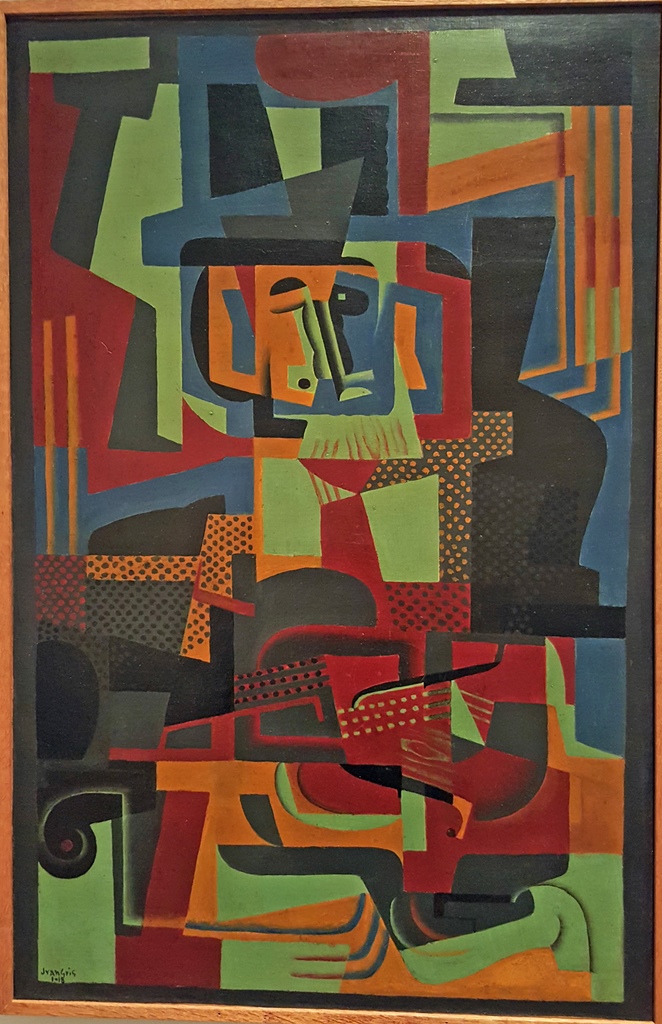
The Man with the Violin, Juan Gris (1918)
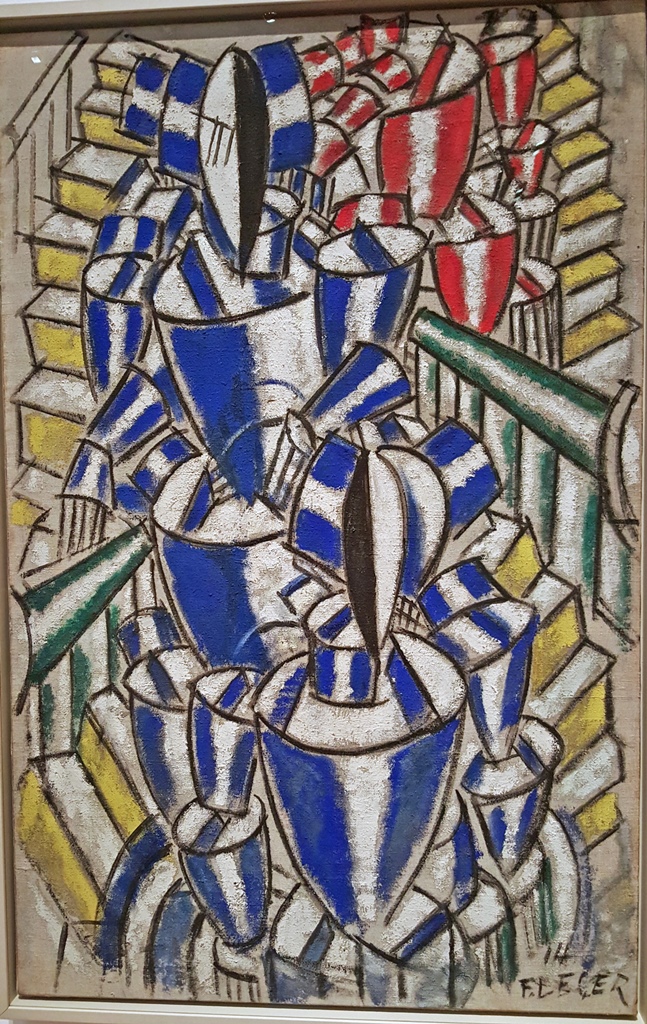
The Staircase, Fernand Léger (1914)
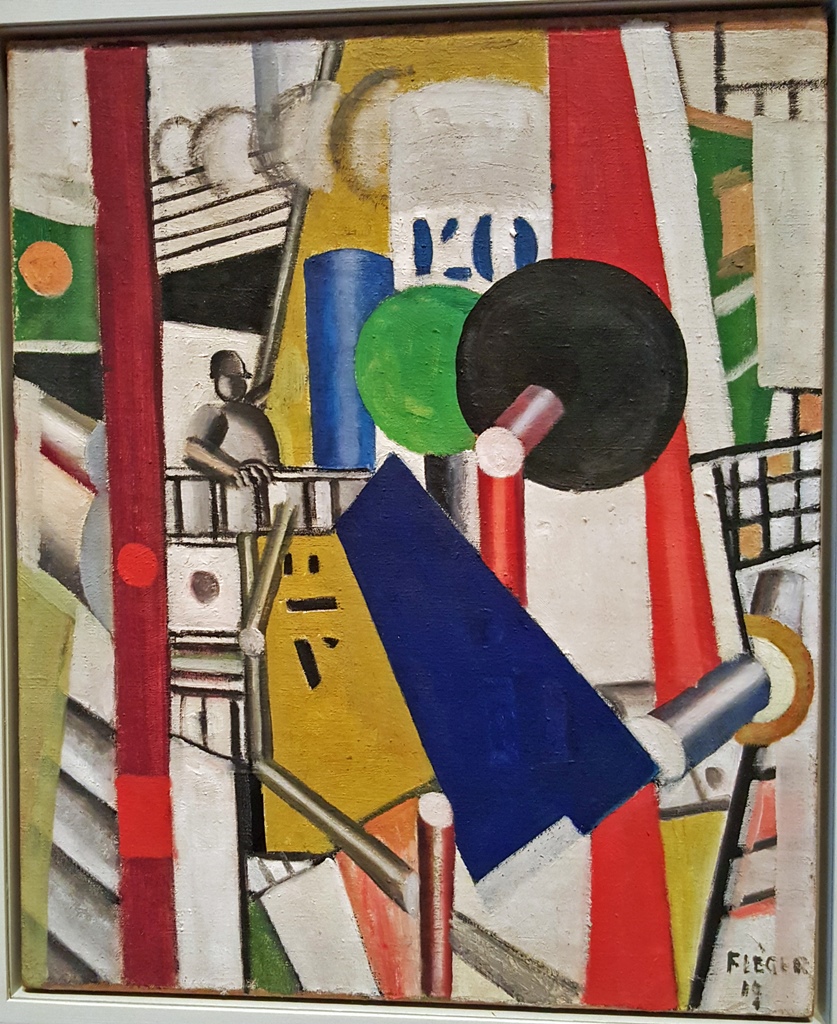
The Boat Deck, Fernand Léger (1919)
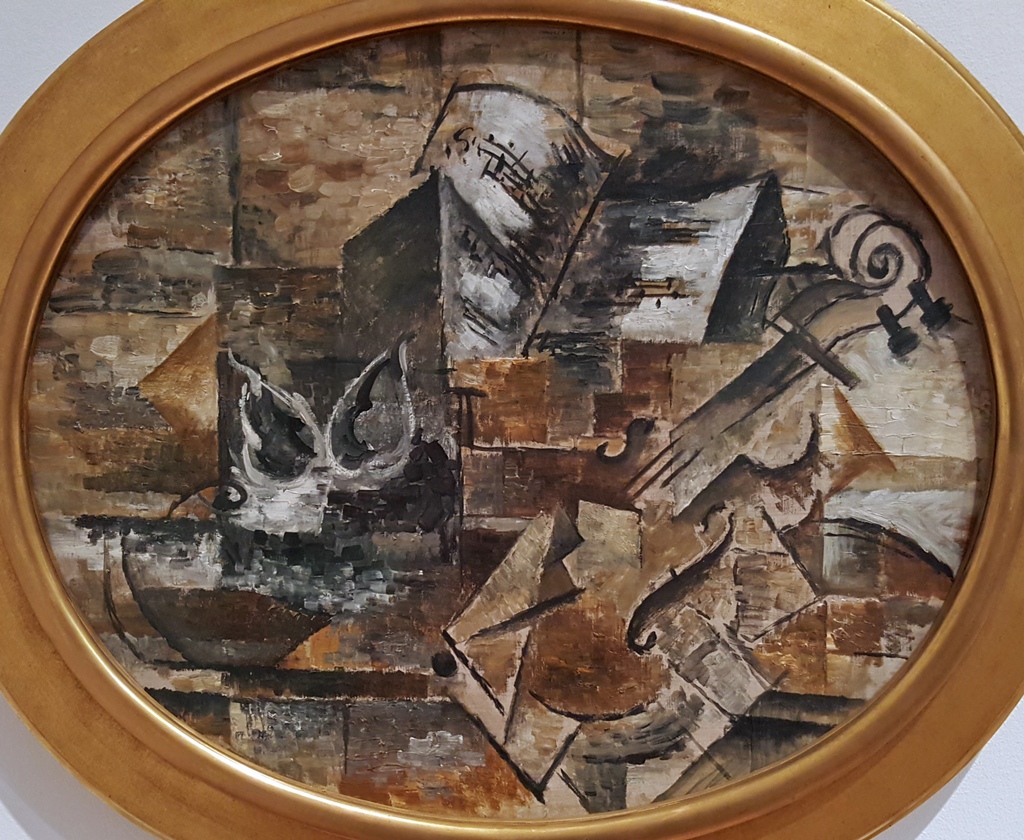
Still Life with Violin, Georges Braque (1911)
A few iconic artists began their careers in the early 20th Century and went on to produce
cutting-edge art for several decades. Two such artists with work on display in the Museum
of Modern Art are Henri Matisse and Pablo Picasso. Here are some of the Matisses and
Picassos we found:
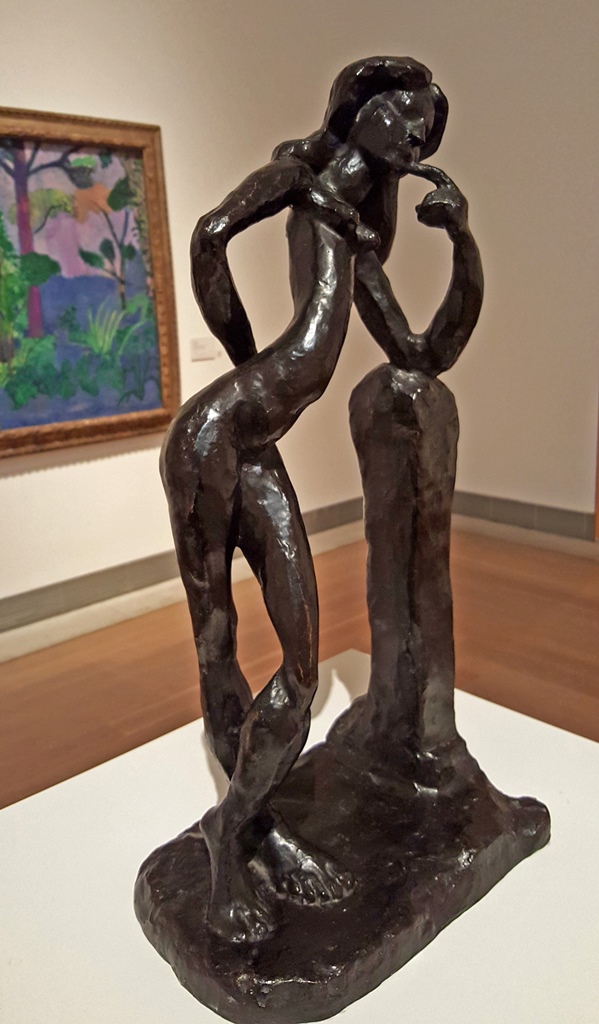
La Serpentine, Henri Matisse (1909)
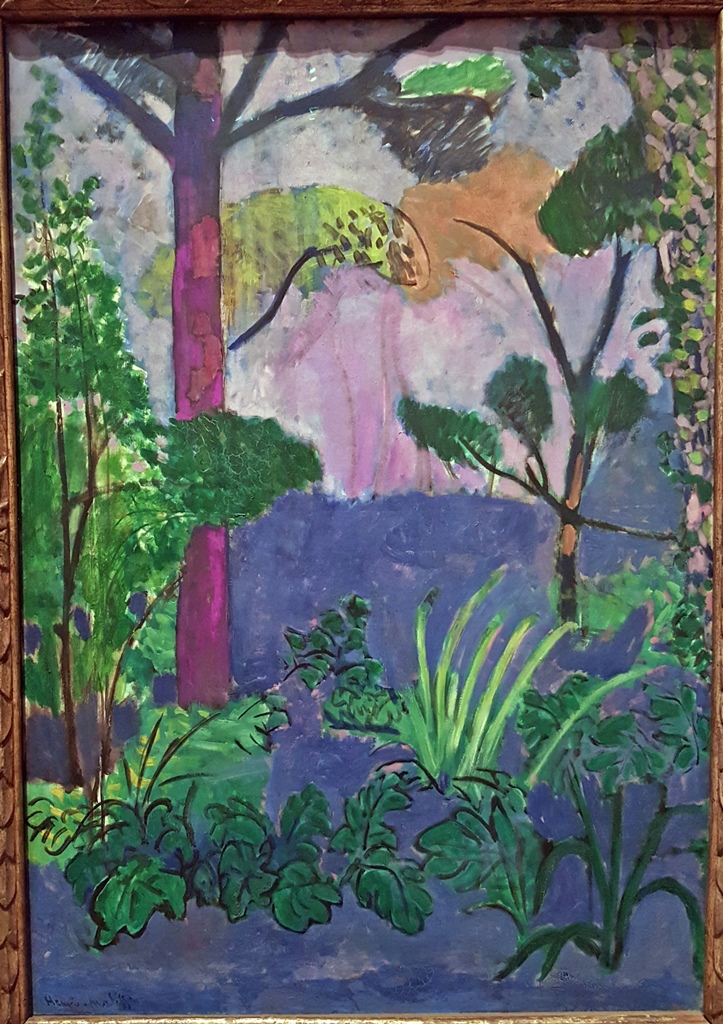
Moroccan Landscape (Acanthus), Henri Matisse (1912)
Apollo, Henri Matisse (1953)
Guitar Player, Pablo Picasso (1916)
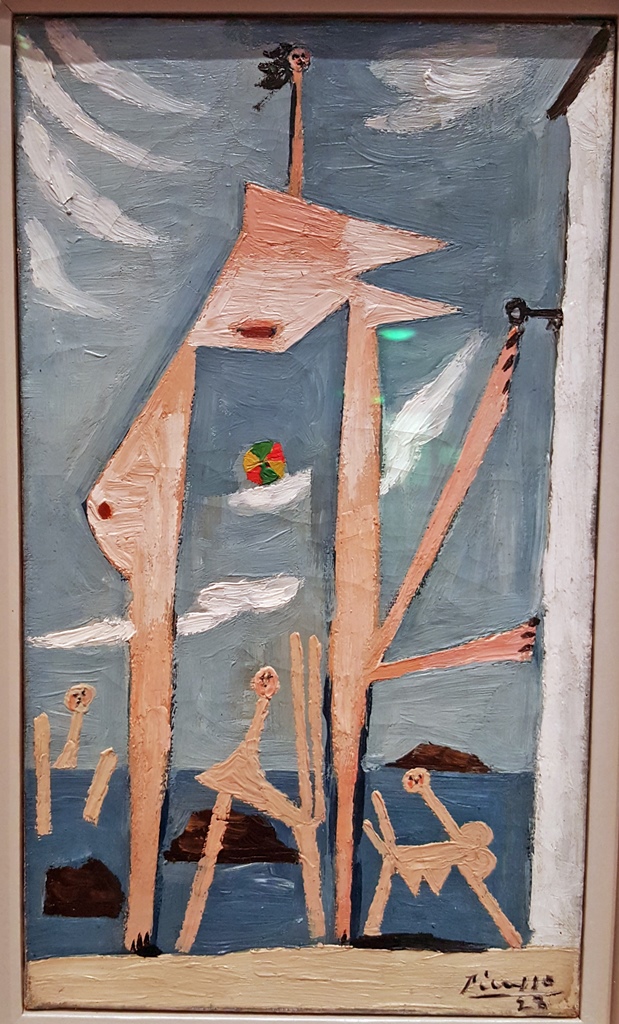
Balloon Bathers, Pablo Picasso (1928)
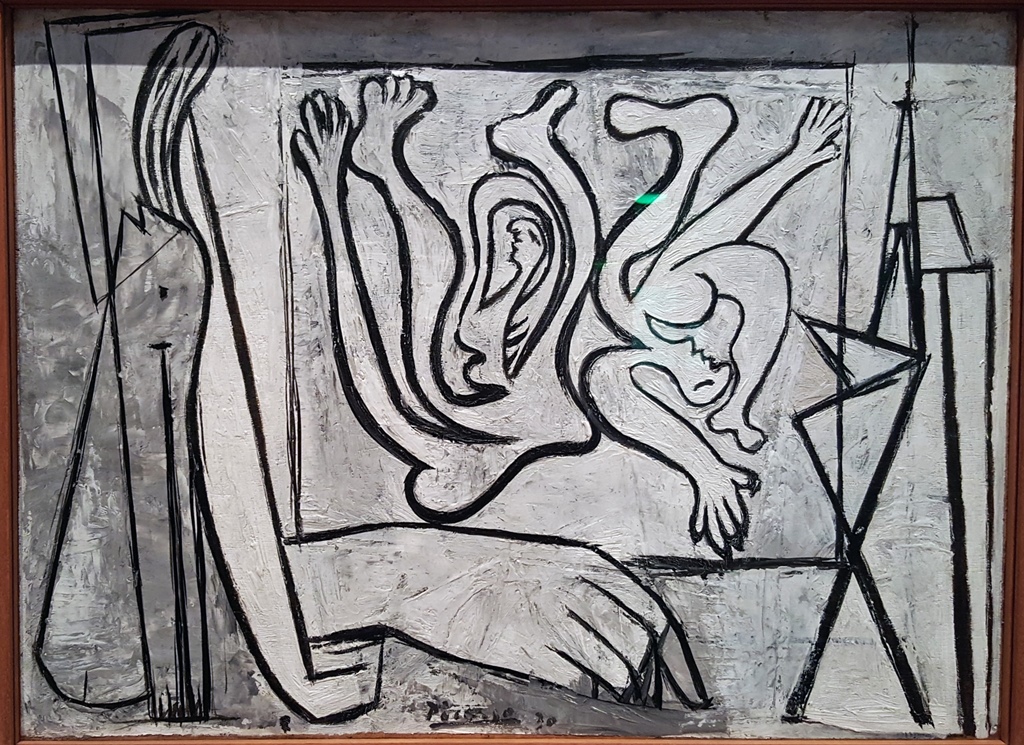
The Painter, Pablo Picasso (1930)
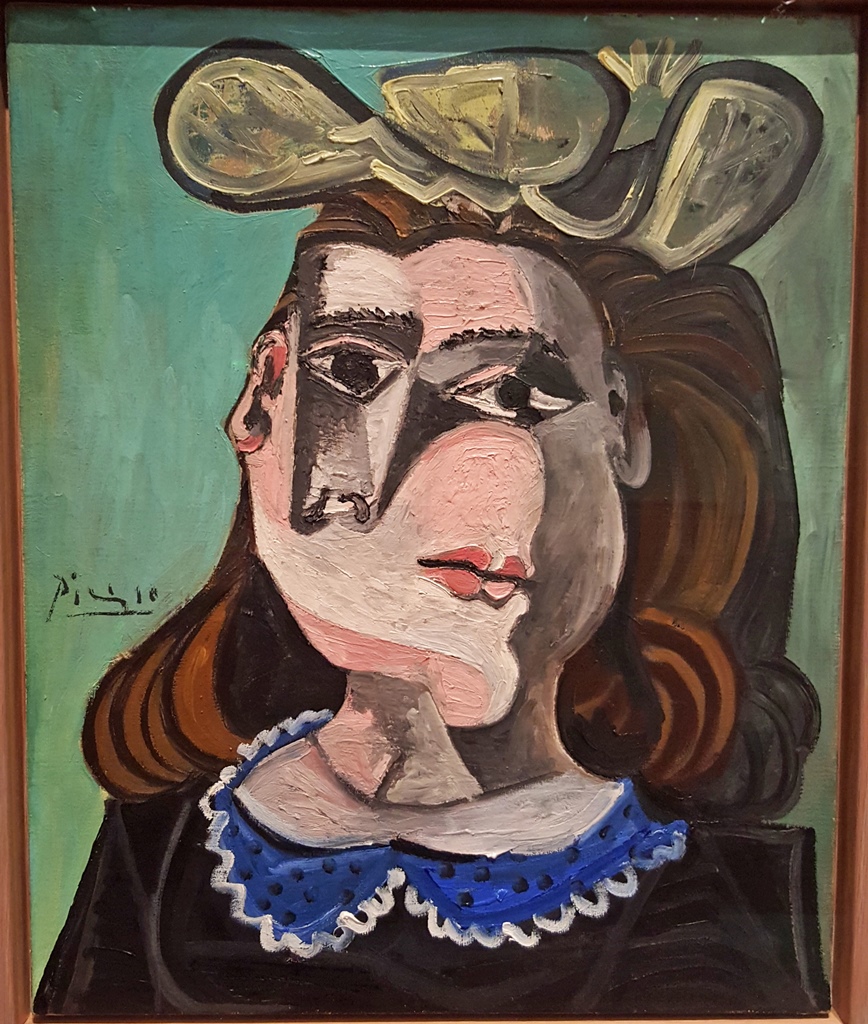
Woman with Blue Collar, Pablo Picasso (1941)
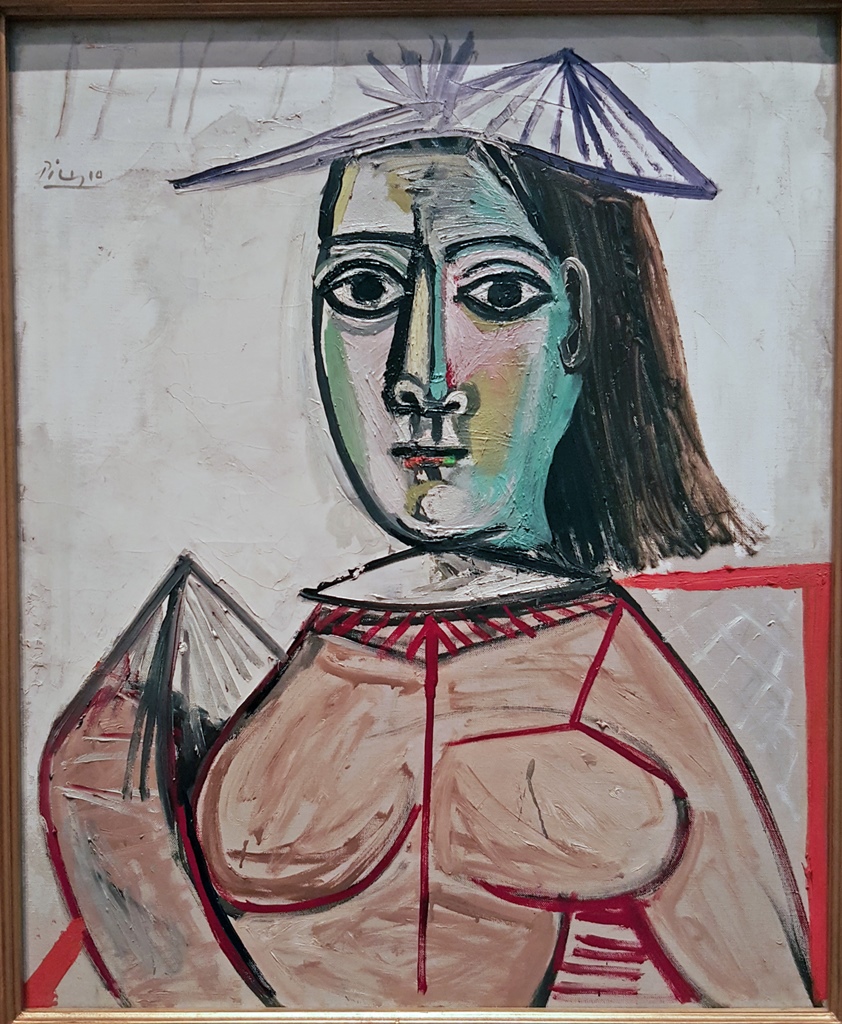
Woman with Black Eyes (Dora Maar), Pablo Picasso (1941-43)
Here are some works from the 1920’s (more or less):
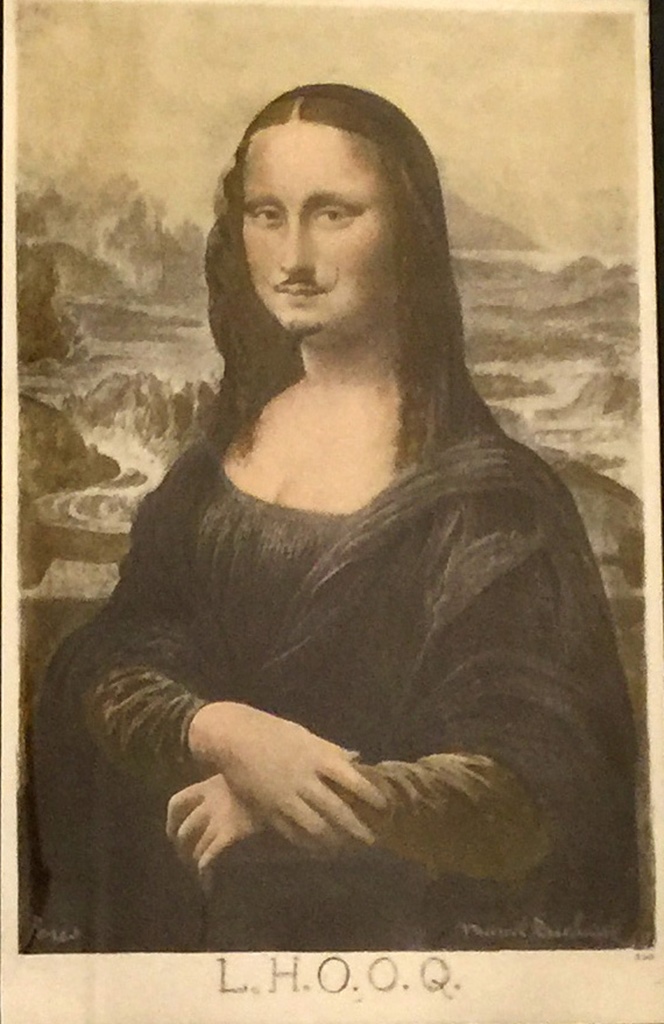
L.H.O.O.Q., Mona Lisa with Moustache, Marcel Duchamp (1919)
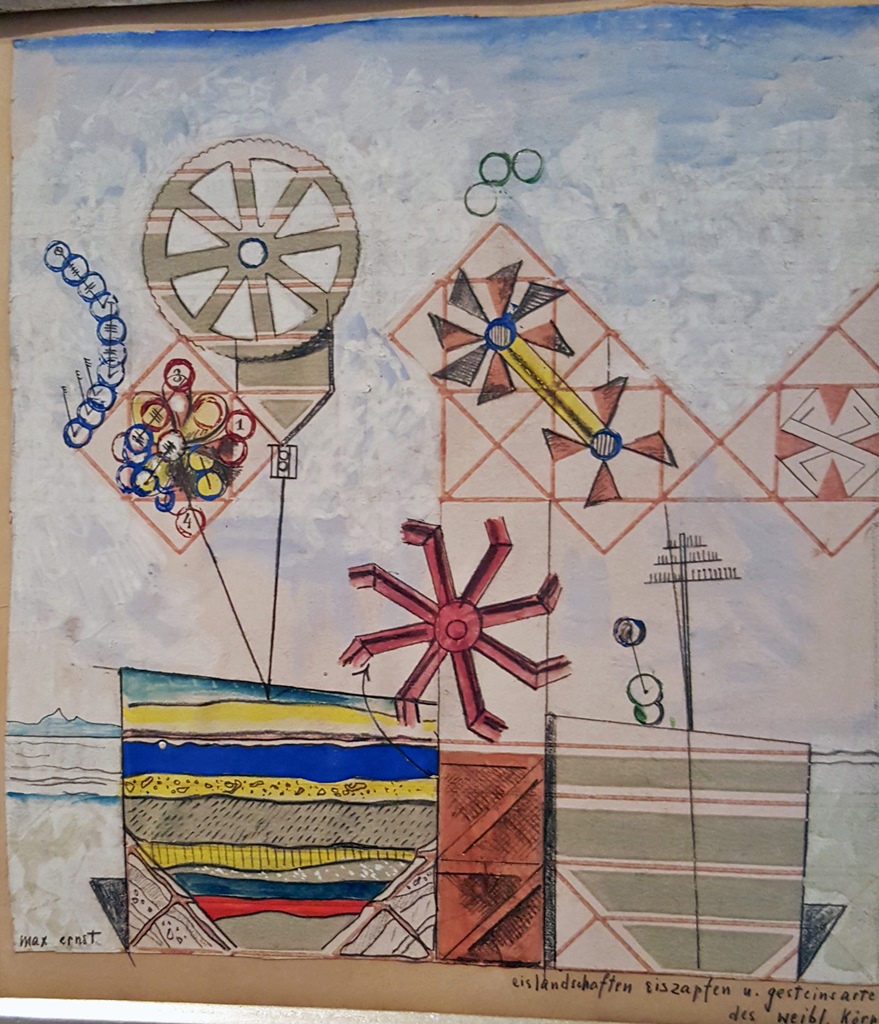
Glacial Landscapes, Icicles and Minerals of the Female Body, Max Ernst (1920)
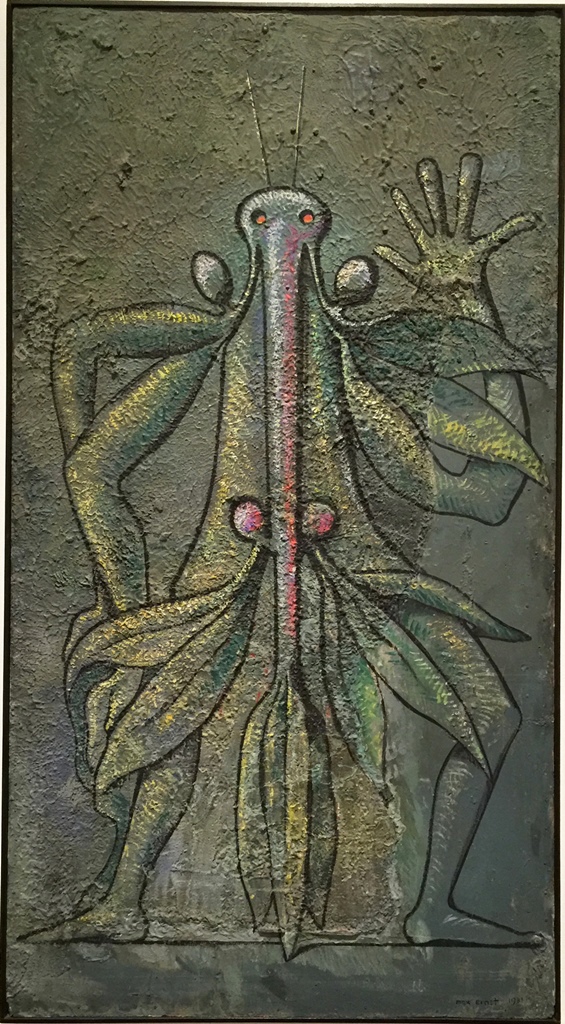
Human Figure, Max Ernst (1931)
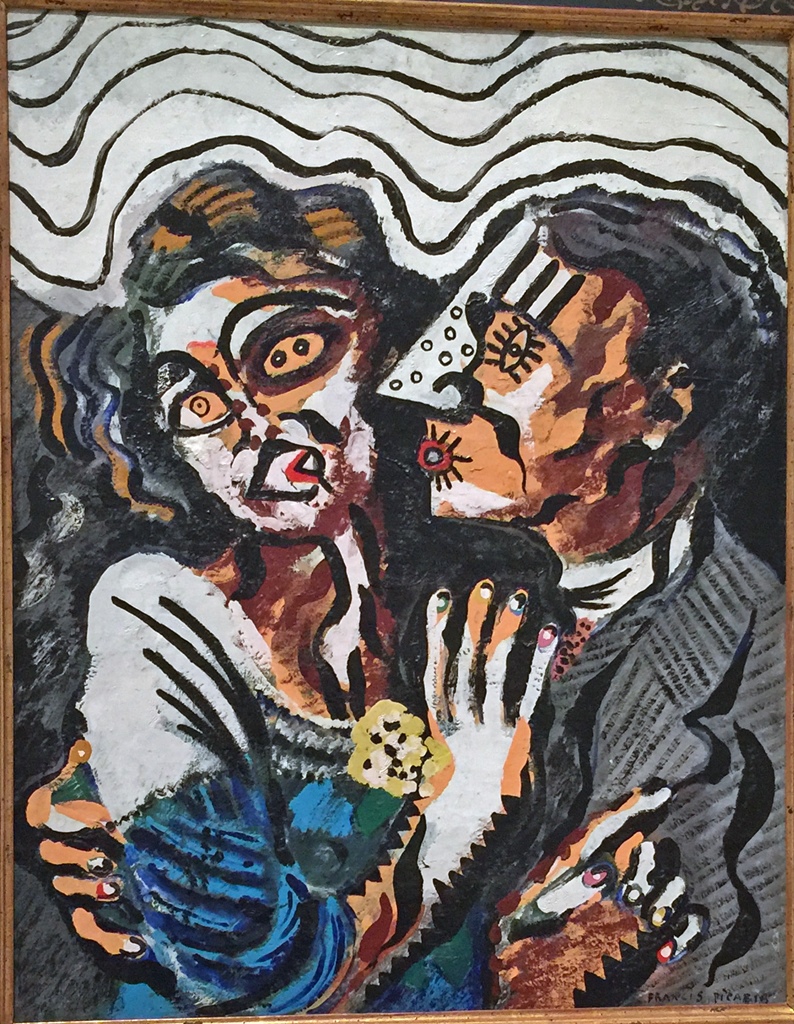
First Meeting, Francis Picabia (1925)
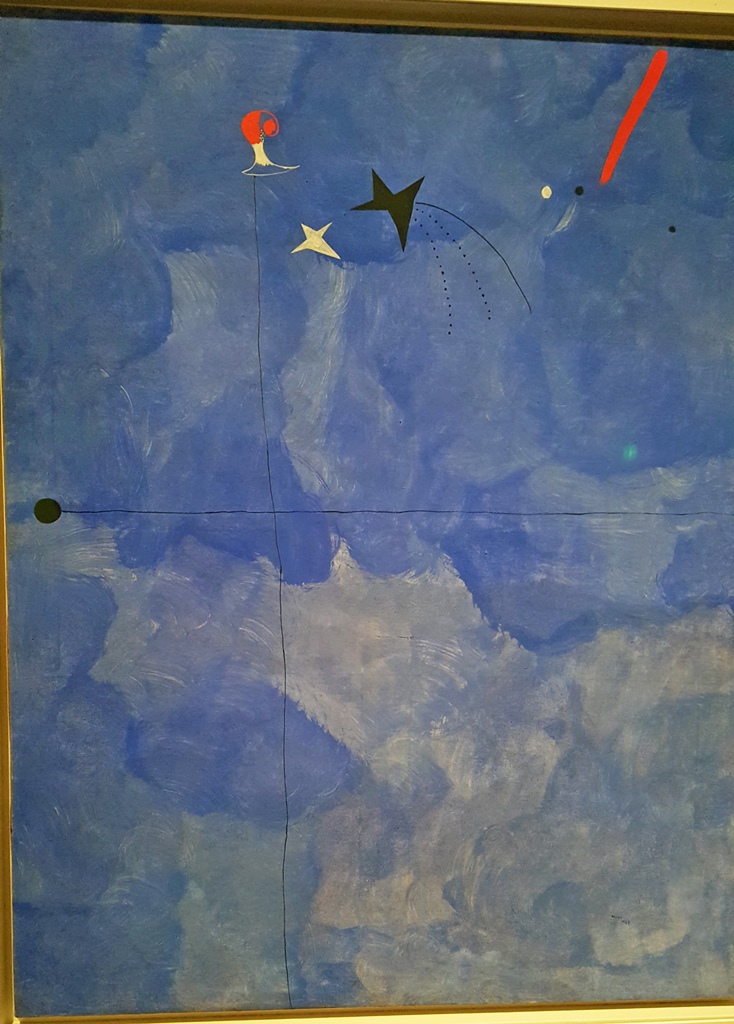
Head of Catalan Peasant, Joan Miró (1925)
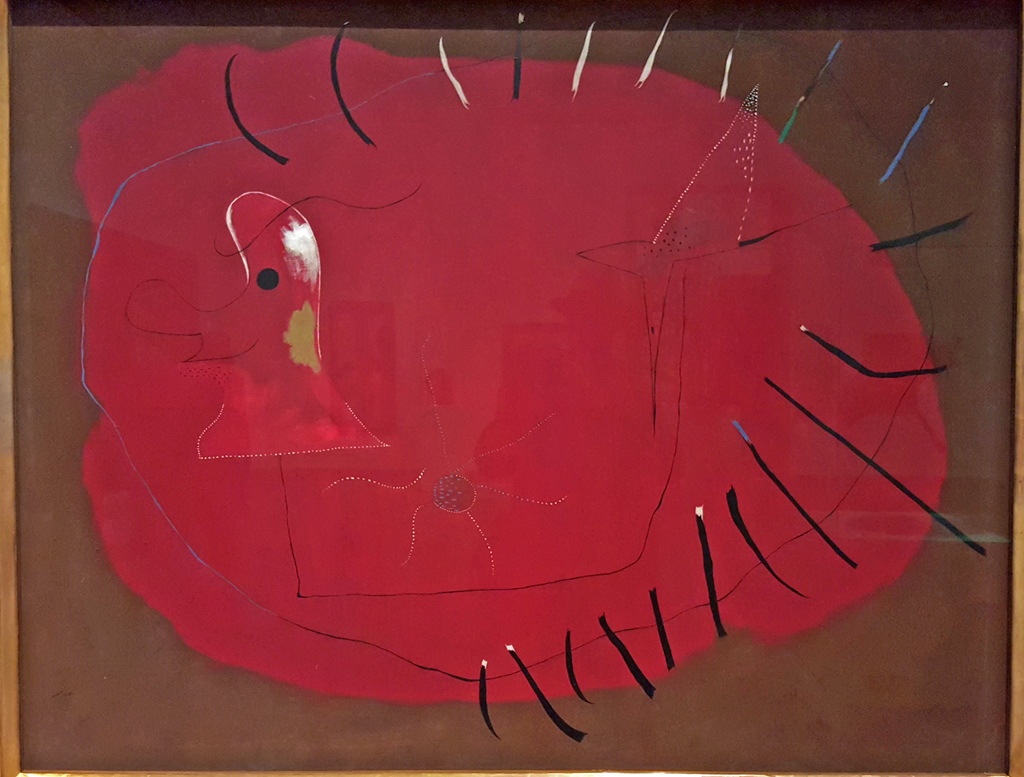
The Red Creature, Joan Miró (1927)
Taking a break from the art, here’s a nice view of Djurgården from the Museum of Modern Art:
Djurgården - Nordic Museum and Vasa Museum
The 1930’s didn’t seem to have been as well represented. One display was a collection of
Soviet propaganda posters:
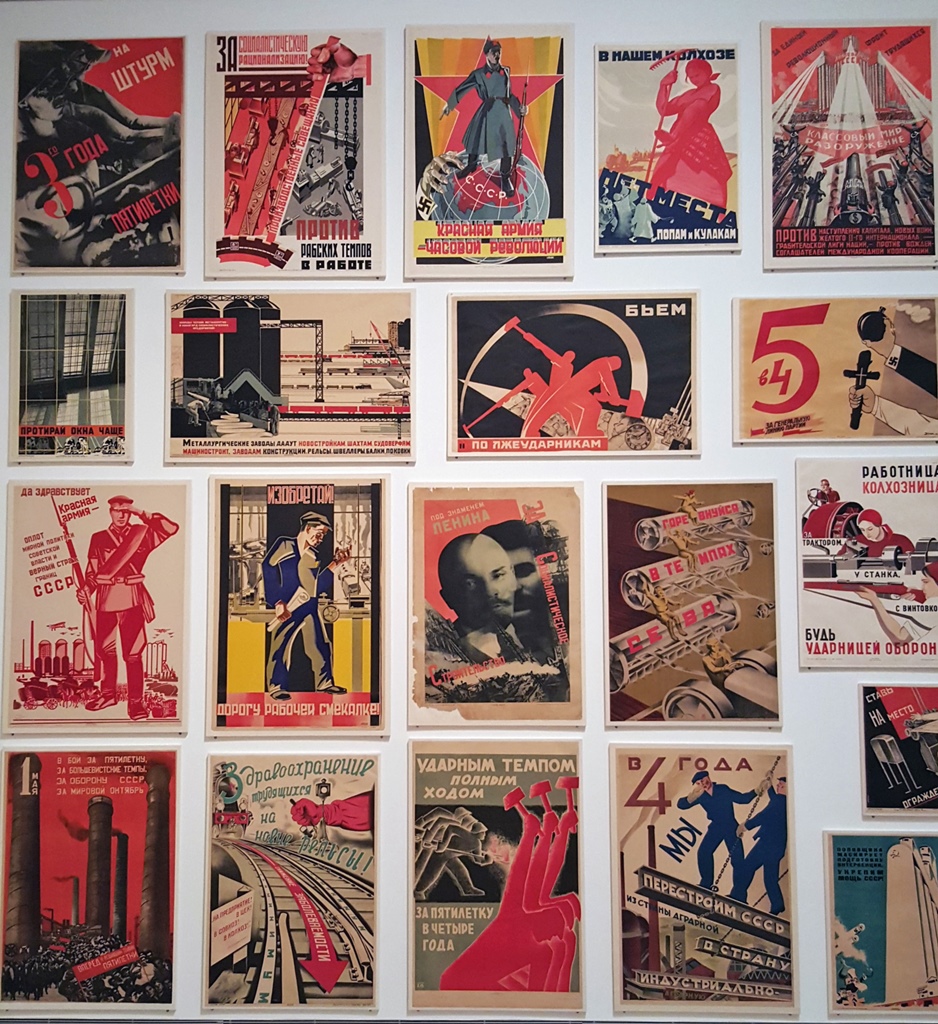
Soviet Propaganda Posters (1931)
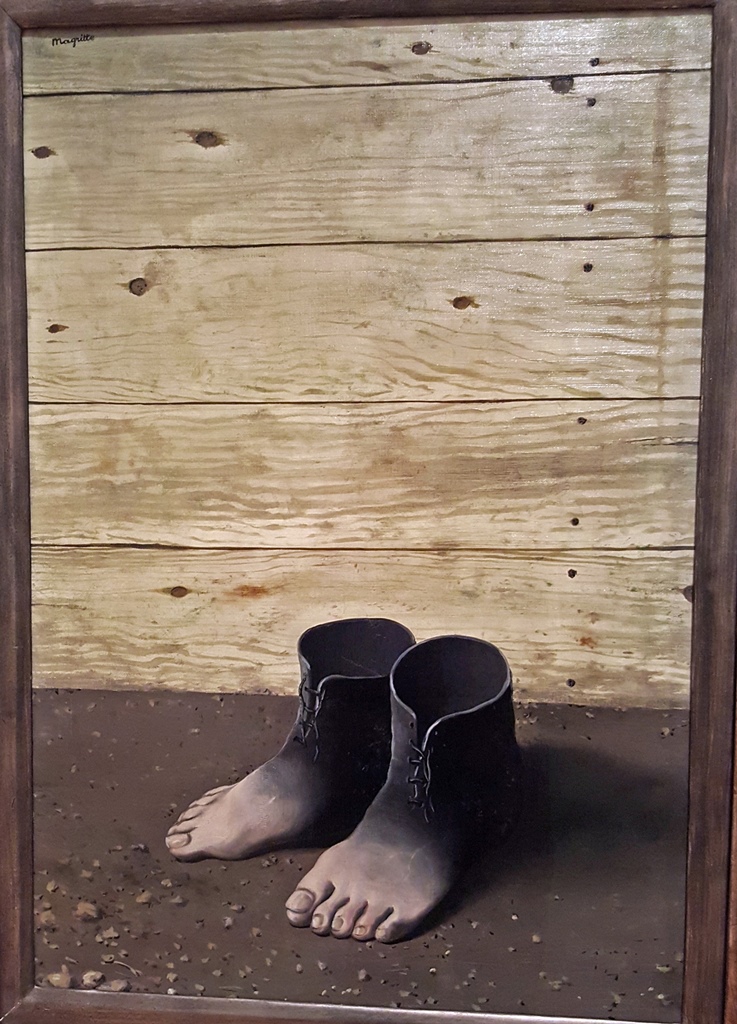
The Red Model, René Magritte (1935)
Here’s some of what was on display for the post-war years:
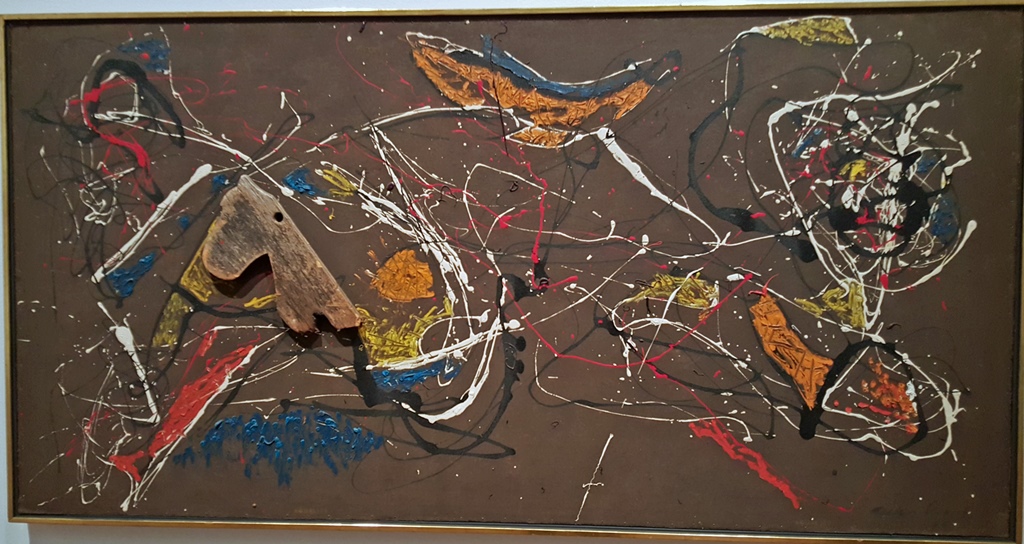
The Wooden Horse: Number 10 A, Jackson Pollock (1948)
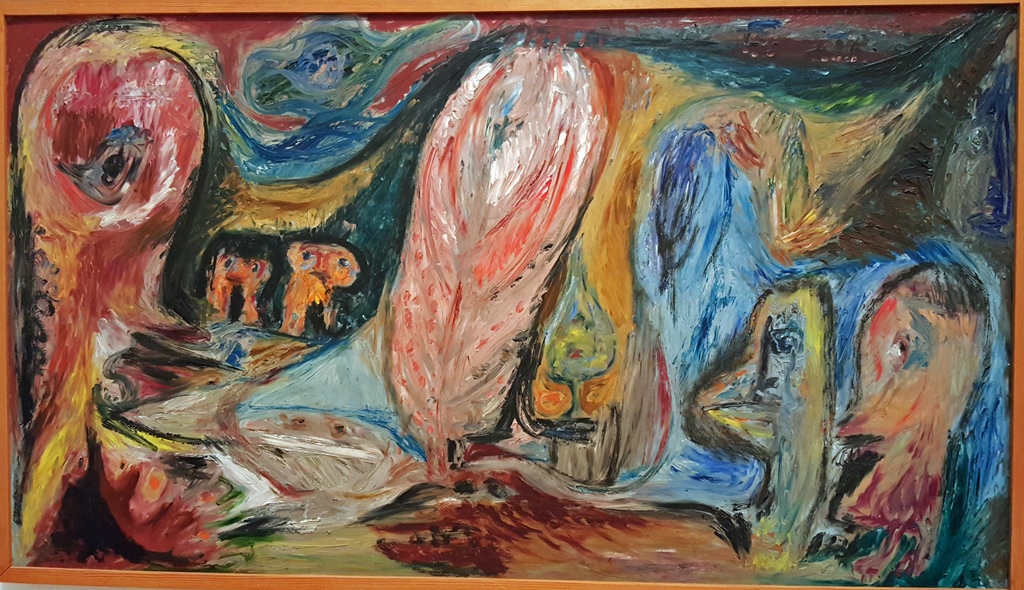
To My Sister, Asger Jorn (1952)
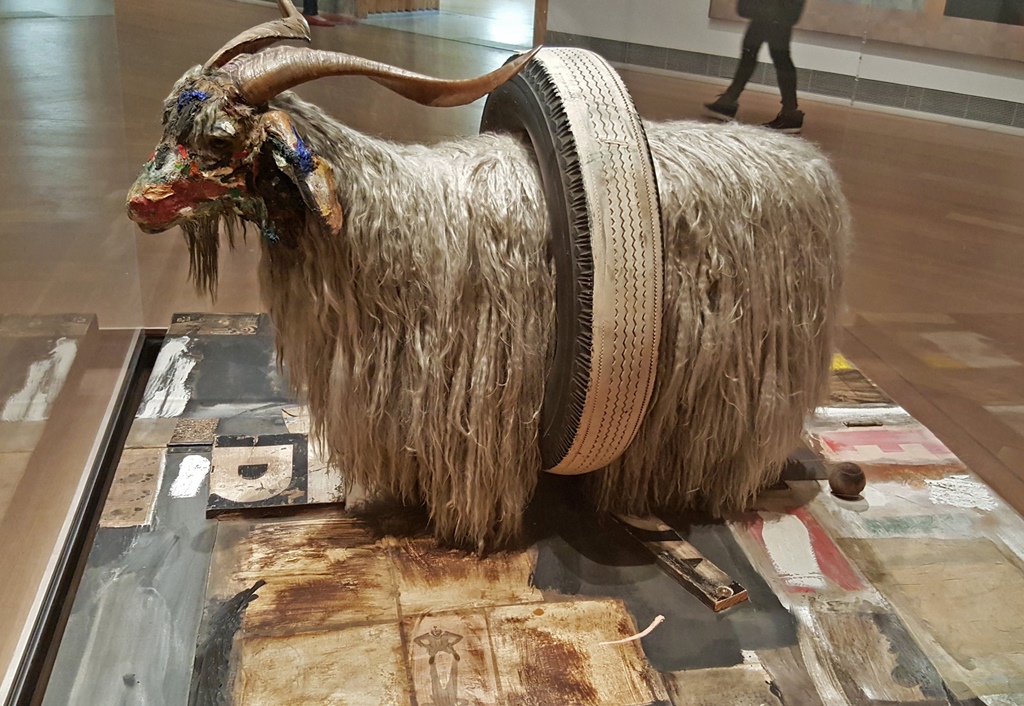
Monogram, Robert Rauschenberg (1955-59)
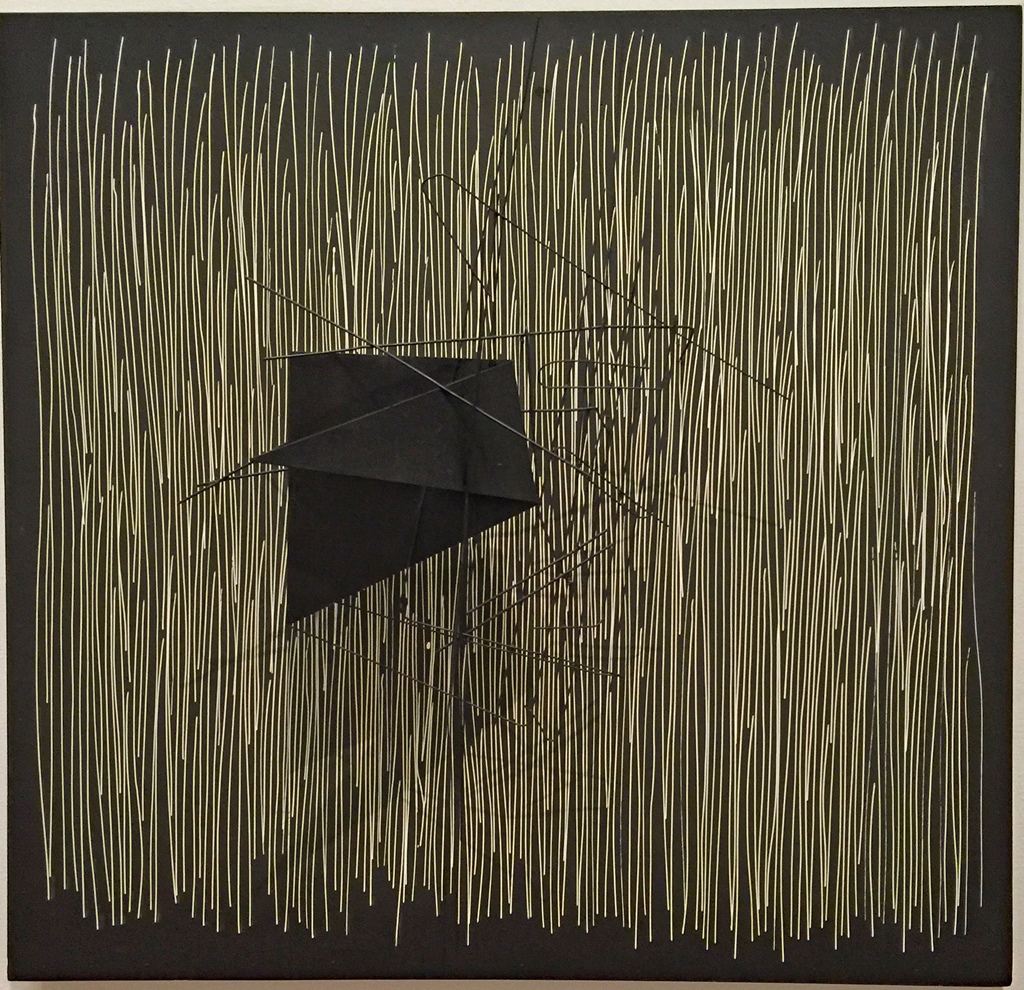
Vibration with Black Shape, Jesus Rafael Soto (1959)
The 1960’s were pretty well represented:
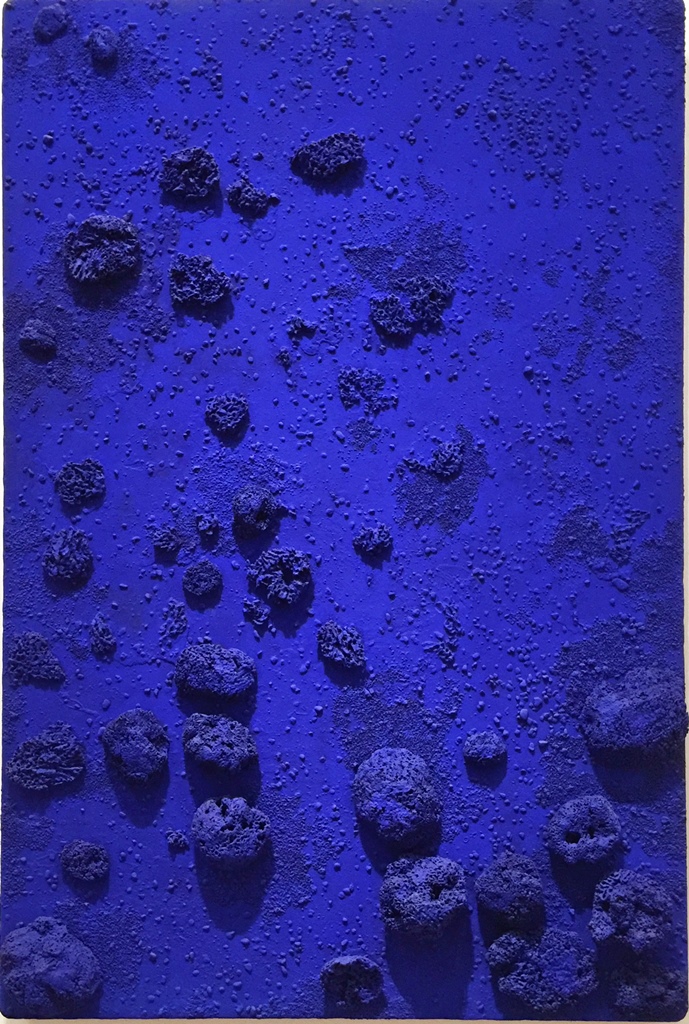
Blue Sponge Sculpture RE 17, Yves Klein (1960)
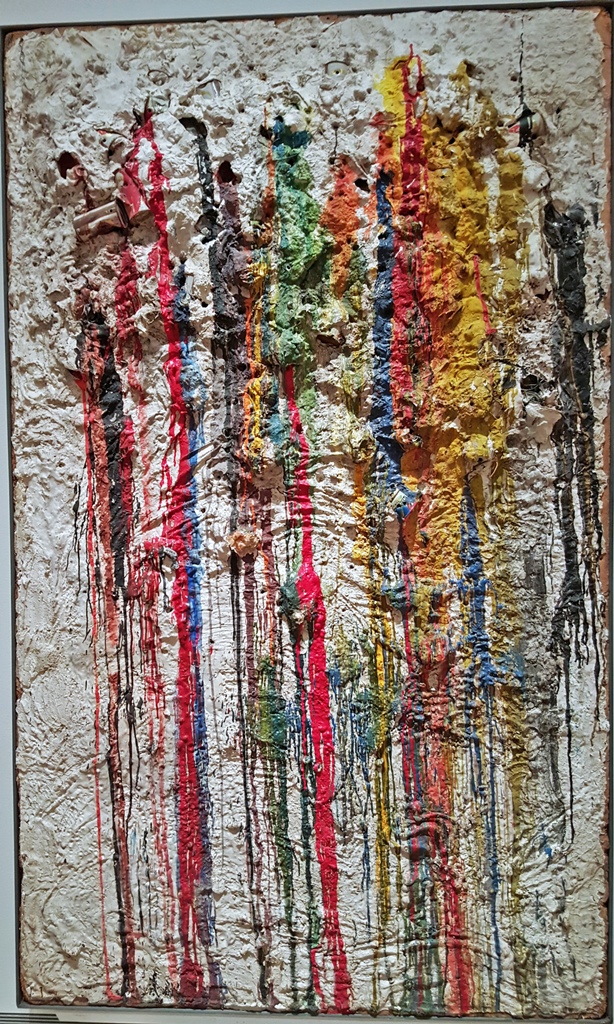
Shooting Painting, Niki de Saint Phalle (1961)
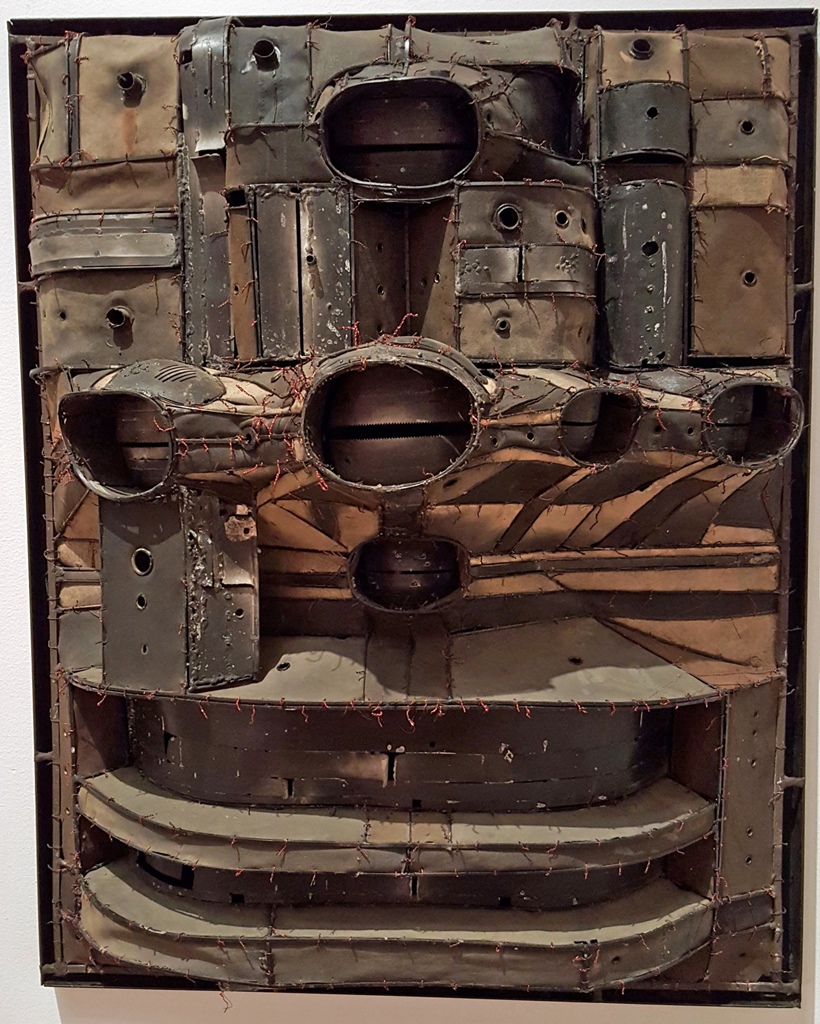
Untitled, Lee Bontecou (1962)
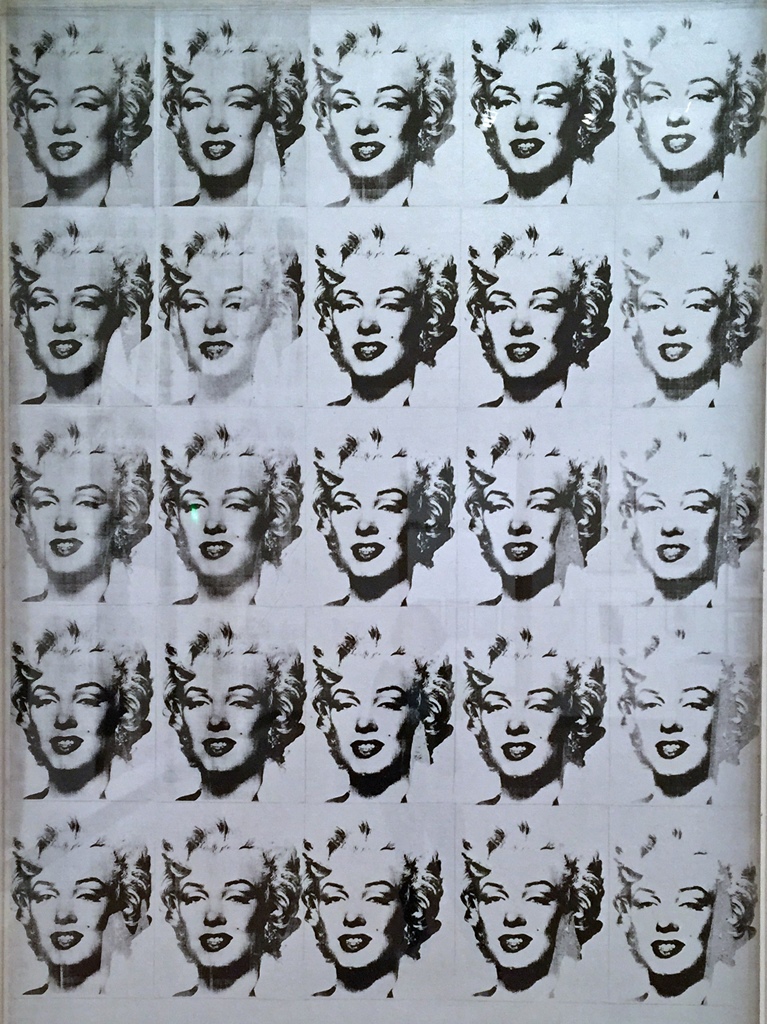
Marilyn Monroe in Black and White (Twenty-Five Marilyns), Andy Warhol (1962)
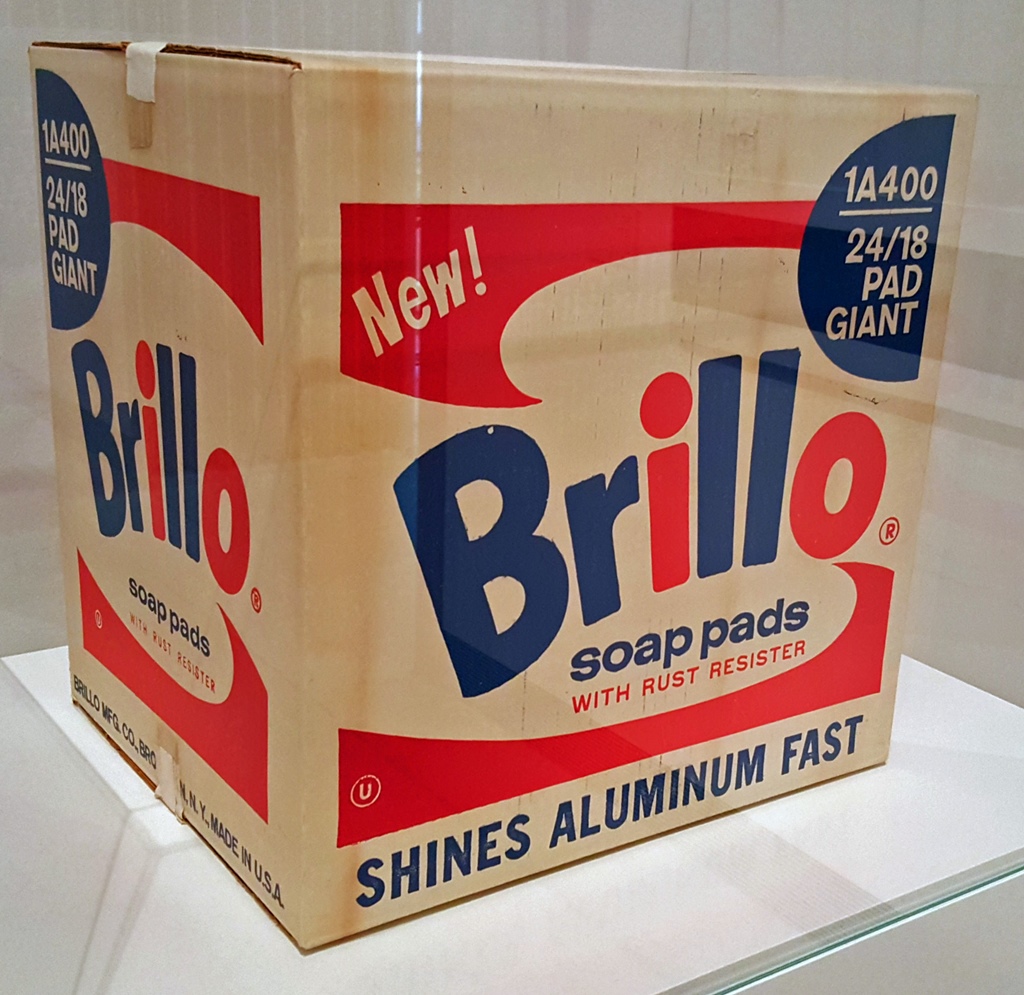
Brillo Soap Pads Box, Andy Warhol (1968)
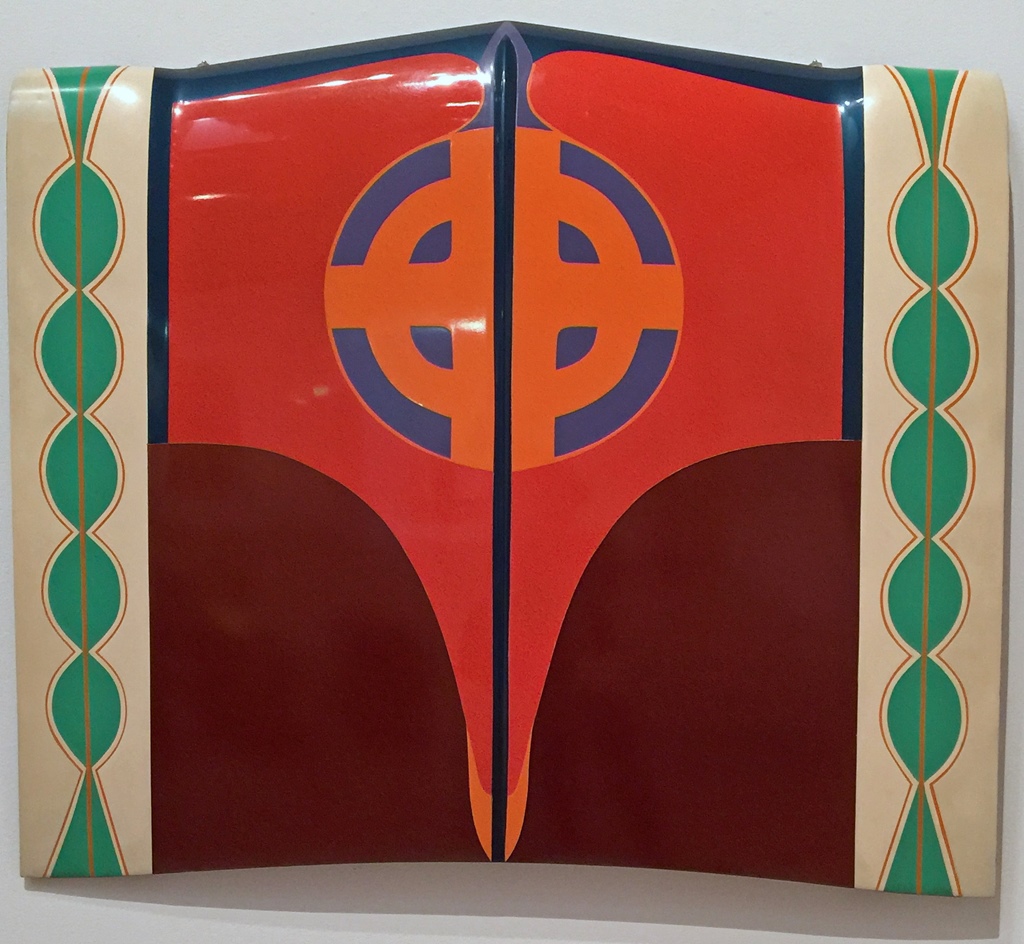
Car Hood, Judy Chicago (1964)
No Title, Moki Cherry (1969)
Toward the end of the display area, there was a display that seemed to consist of a
compressed assortment of artworks. Rather than attempting to untangle all of it,
here are a couple of pictures:
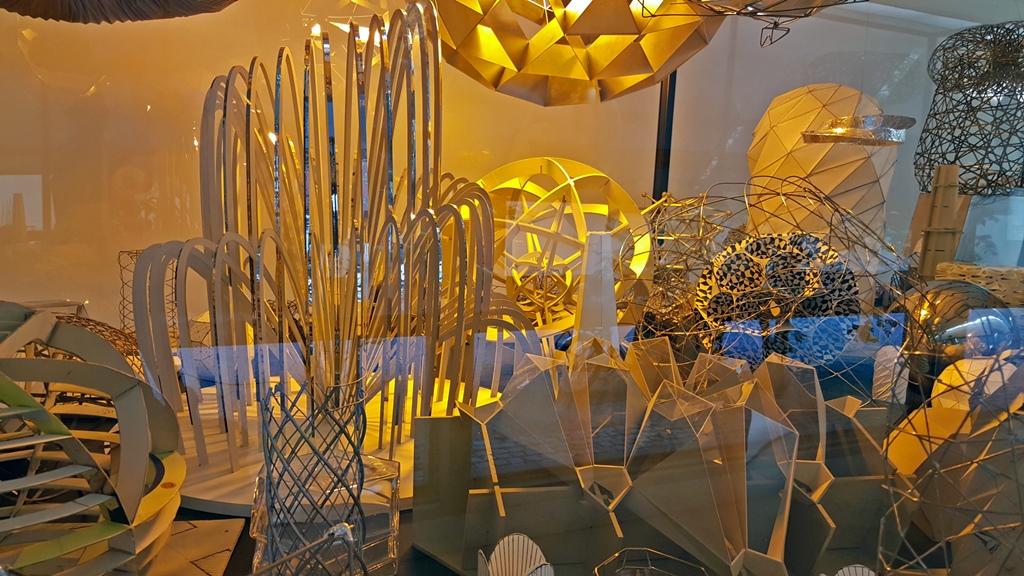
Art Objects
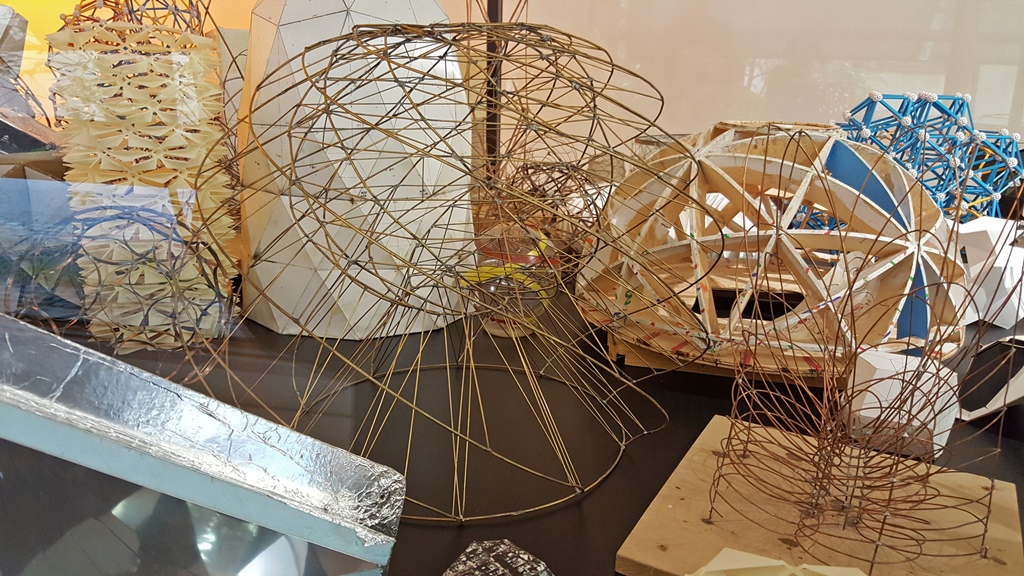
More Art Objects
On the way out, we passed a more contemporary display of an apparent fungus:
Bob and Giant Triple Mushroom, Carsten Höller (2012)
After finishing with the museum, we returned to our hotel and began packing. We would
be flying home the following day. Dinnertime eventually presented itself, and we
decided to return to the restaurant on Gamla Stan where we’d had lunch a few days earlier.
We’d conducted a few experiments with the local cuisine and had generally been
underwhelmed with the results. But we did like this one restaurant – Nella had tasted
my herring, and wanted some herring of her own. We found a tram that had a stop near the
restaurant, and were able to get seated. We ordered seafood.
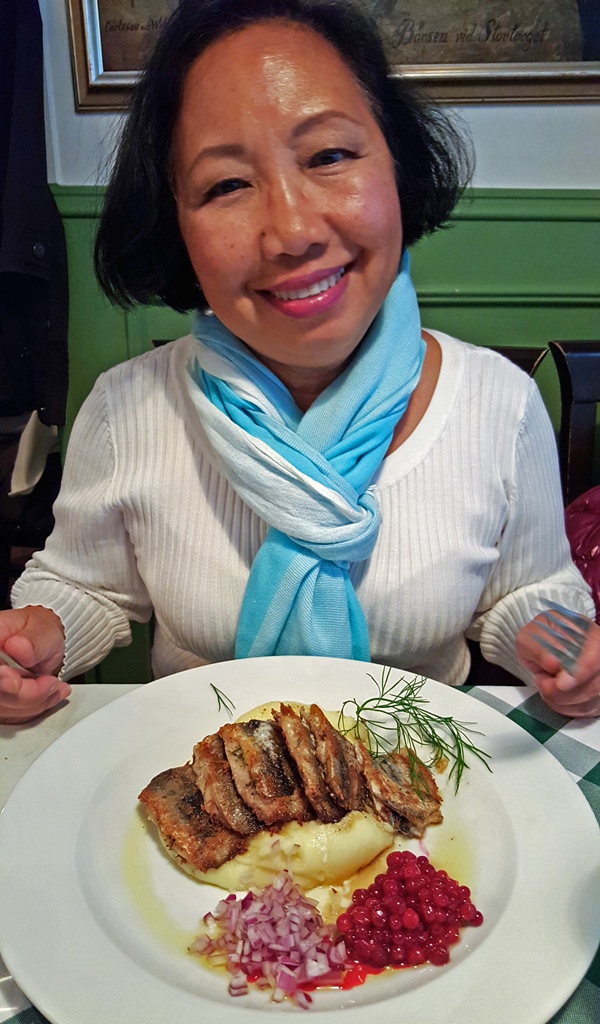
Nella with Herring, Potatoes and Lingonberries
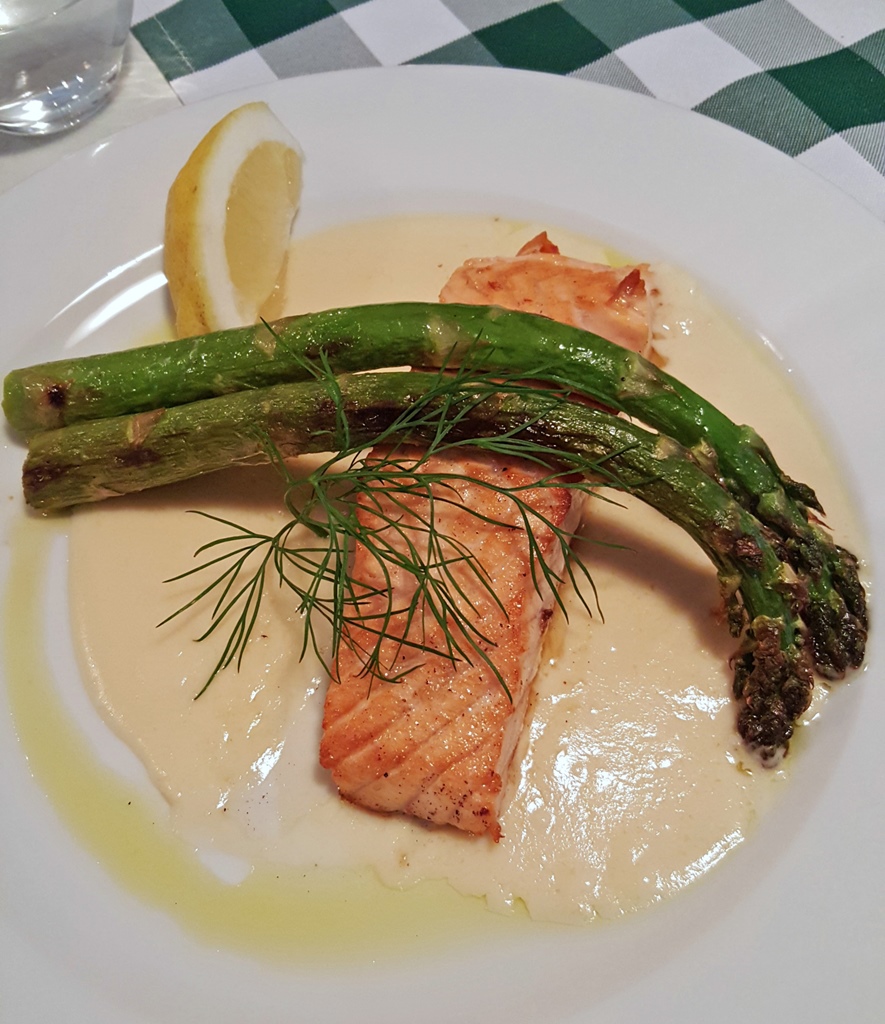
Bob's Salmon and Asparagus
Our travel day dawned ugly, and became rainy. We boarded the Arlanda Express at the train
station and headed for the airport. We flew home uneventfully, with a brief stop in Newark
(it was fine, really).
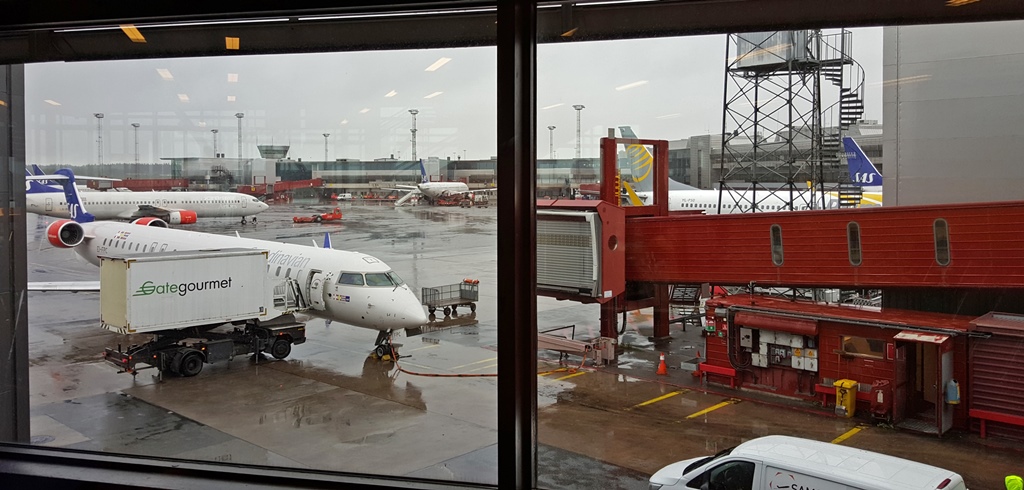
Rainy Day at Stockholm Arlanda Airport
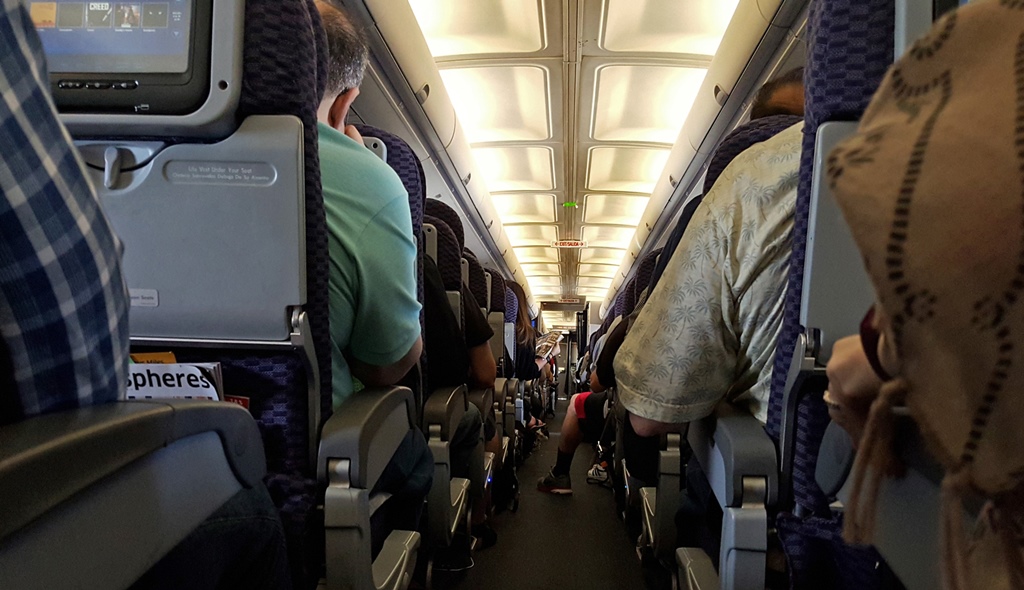
Flying Home
We immediately returned to our humdrum lives. Until early 2017, when we started to get
the travel itch again. As usual, we weren’t sure at first what we wanted to do. But after
numerous discussions, we settled on something that sounded awesome. And we began to plan…
